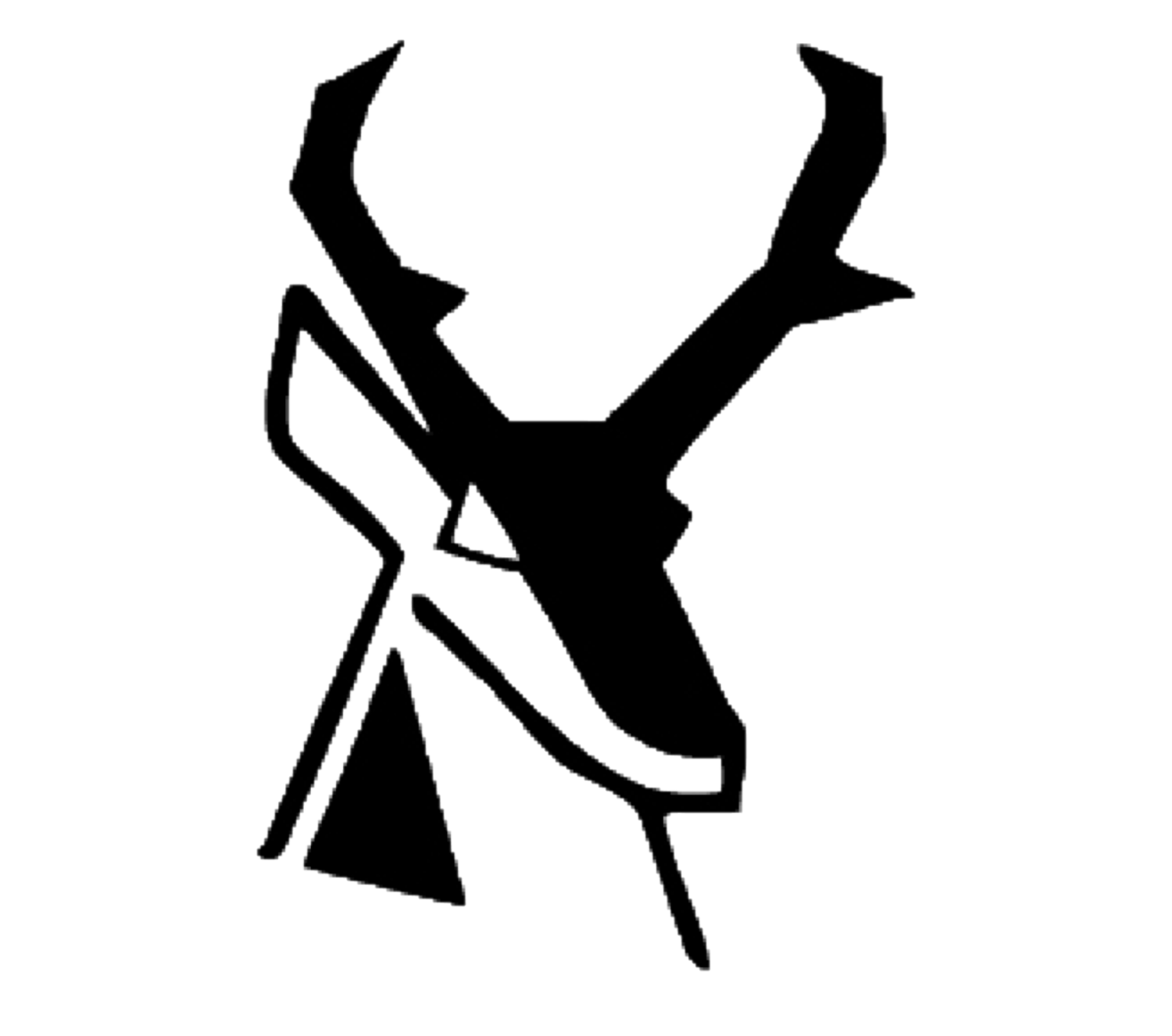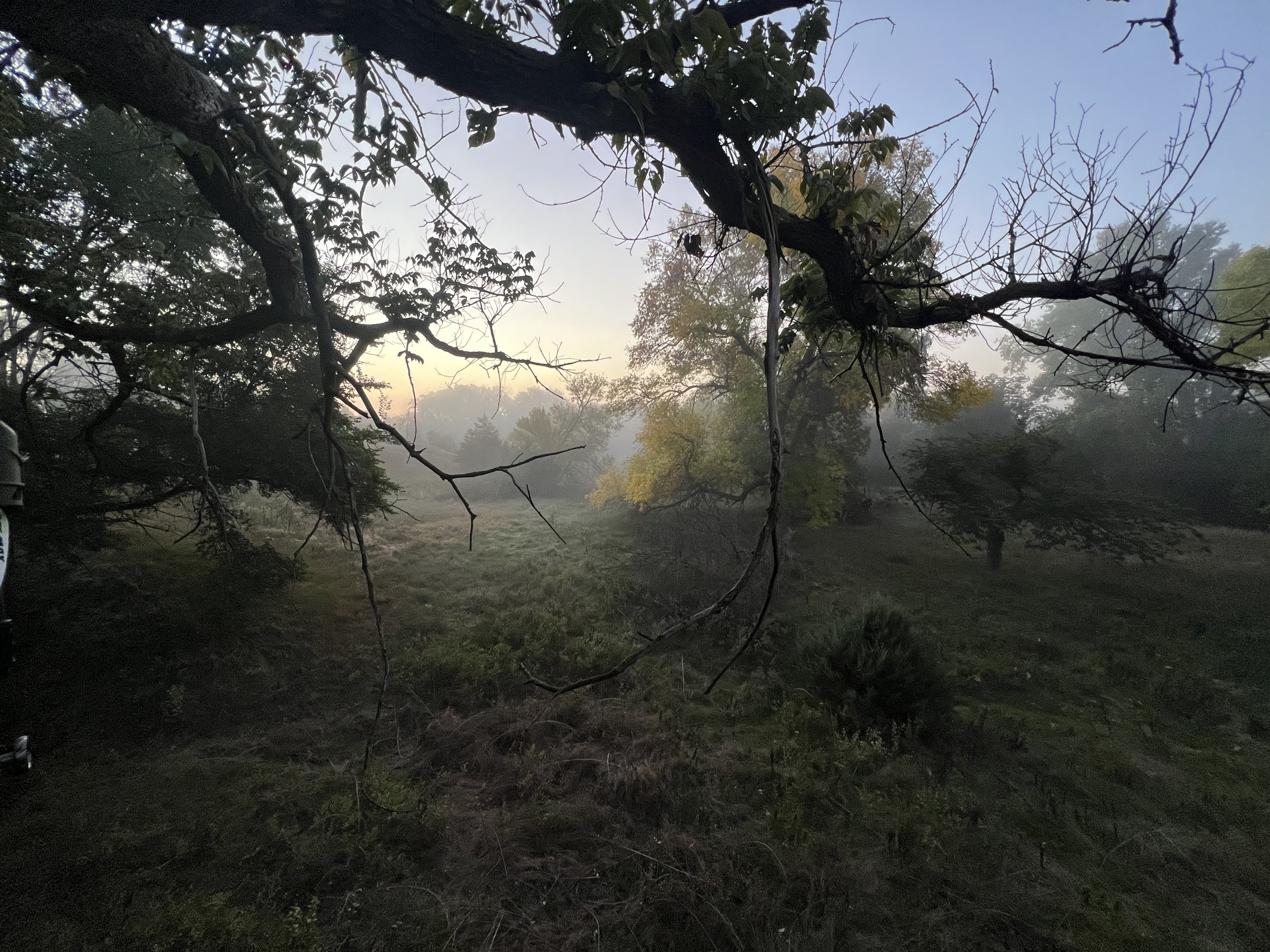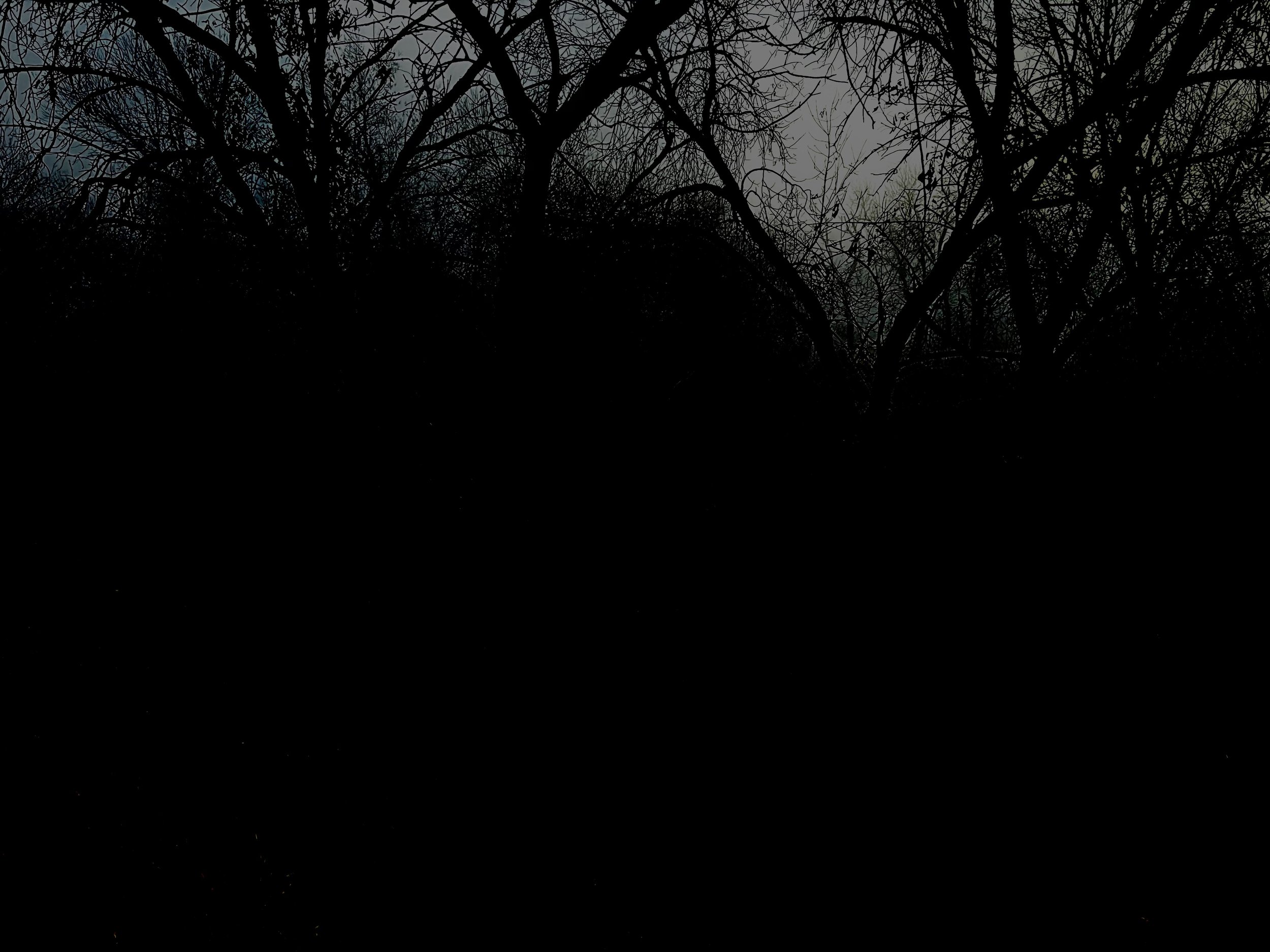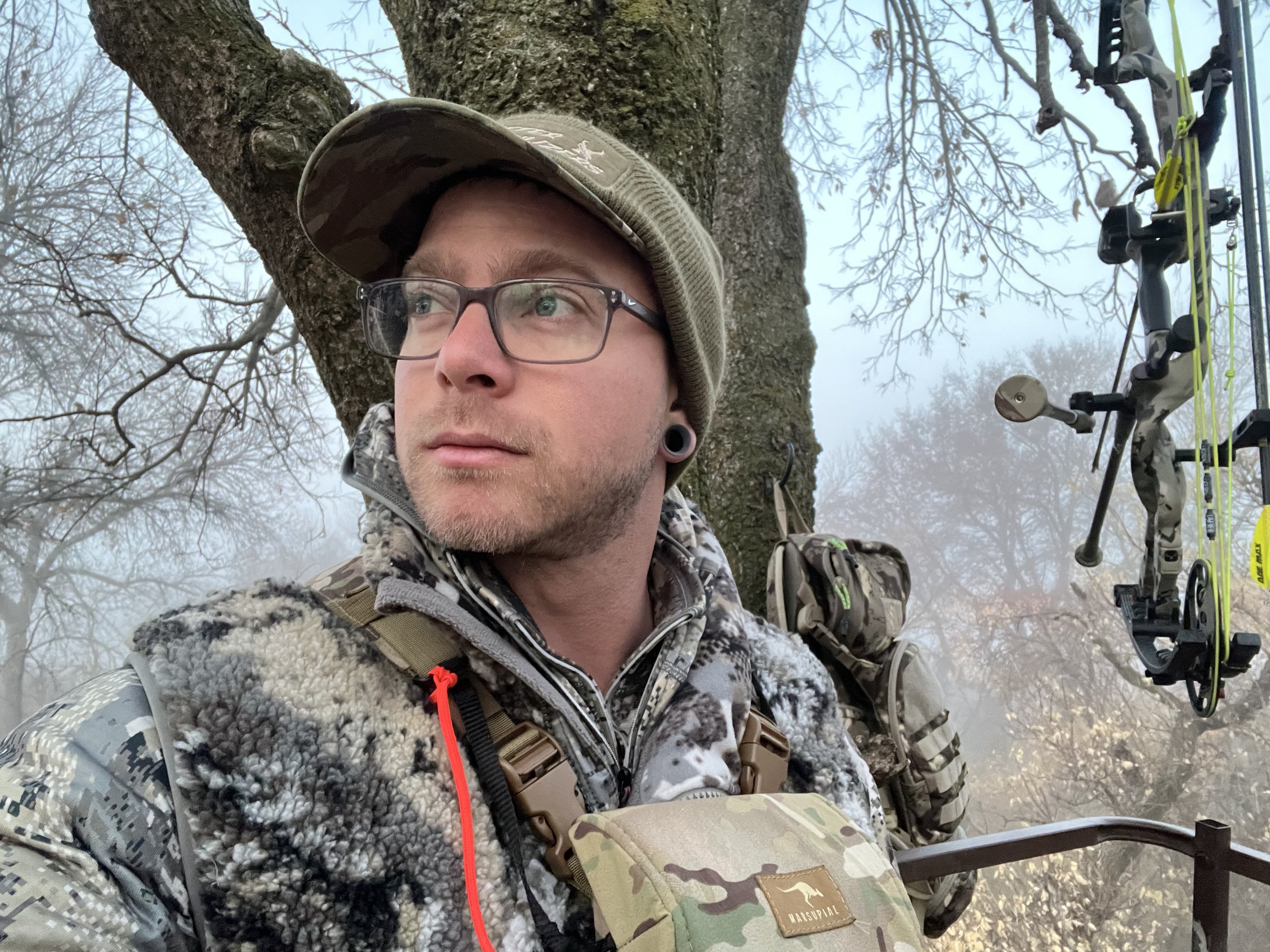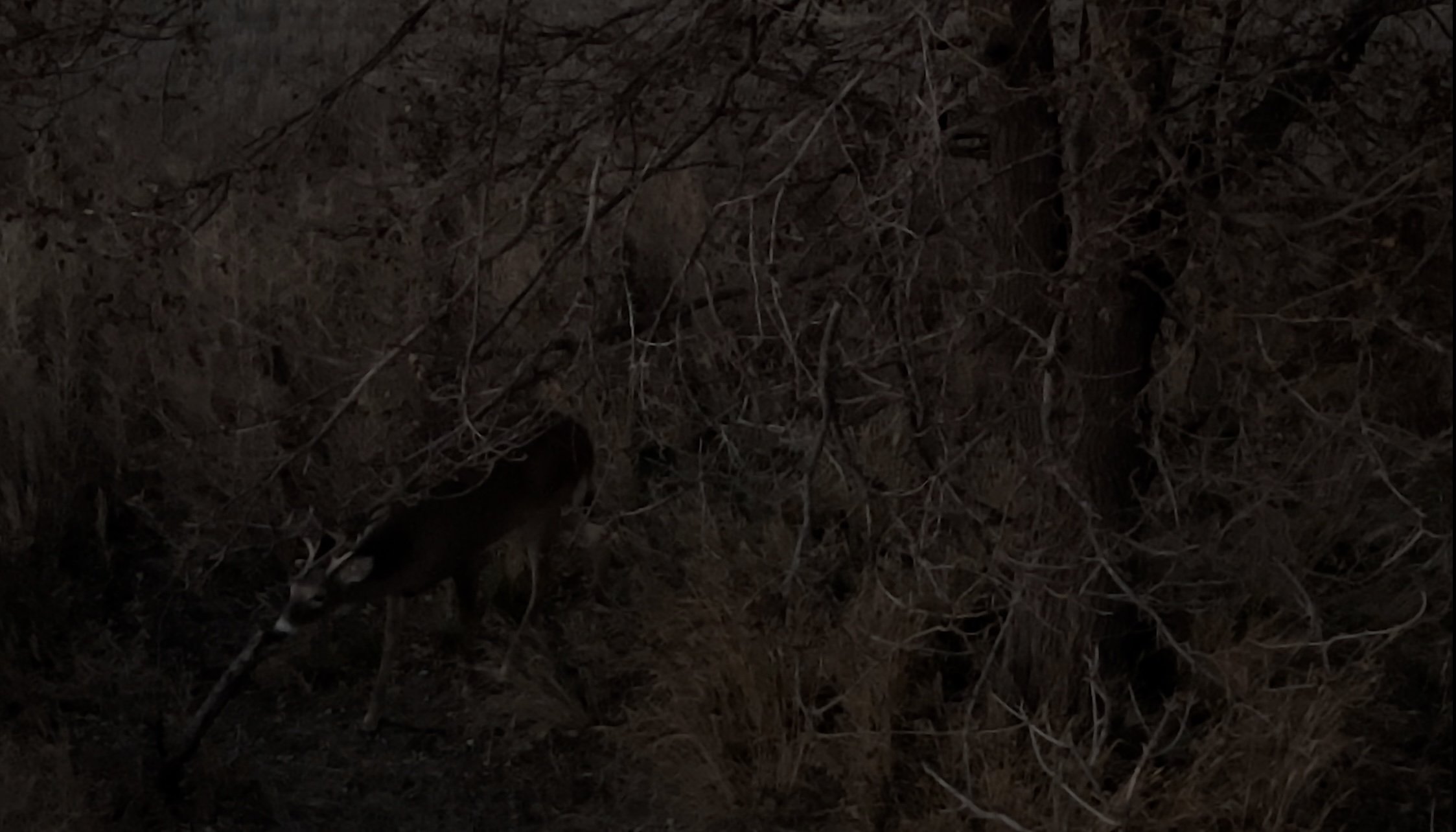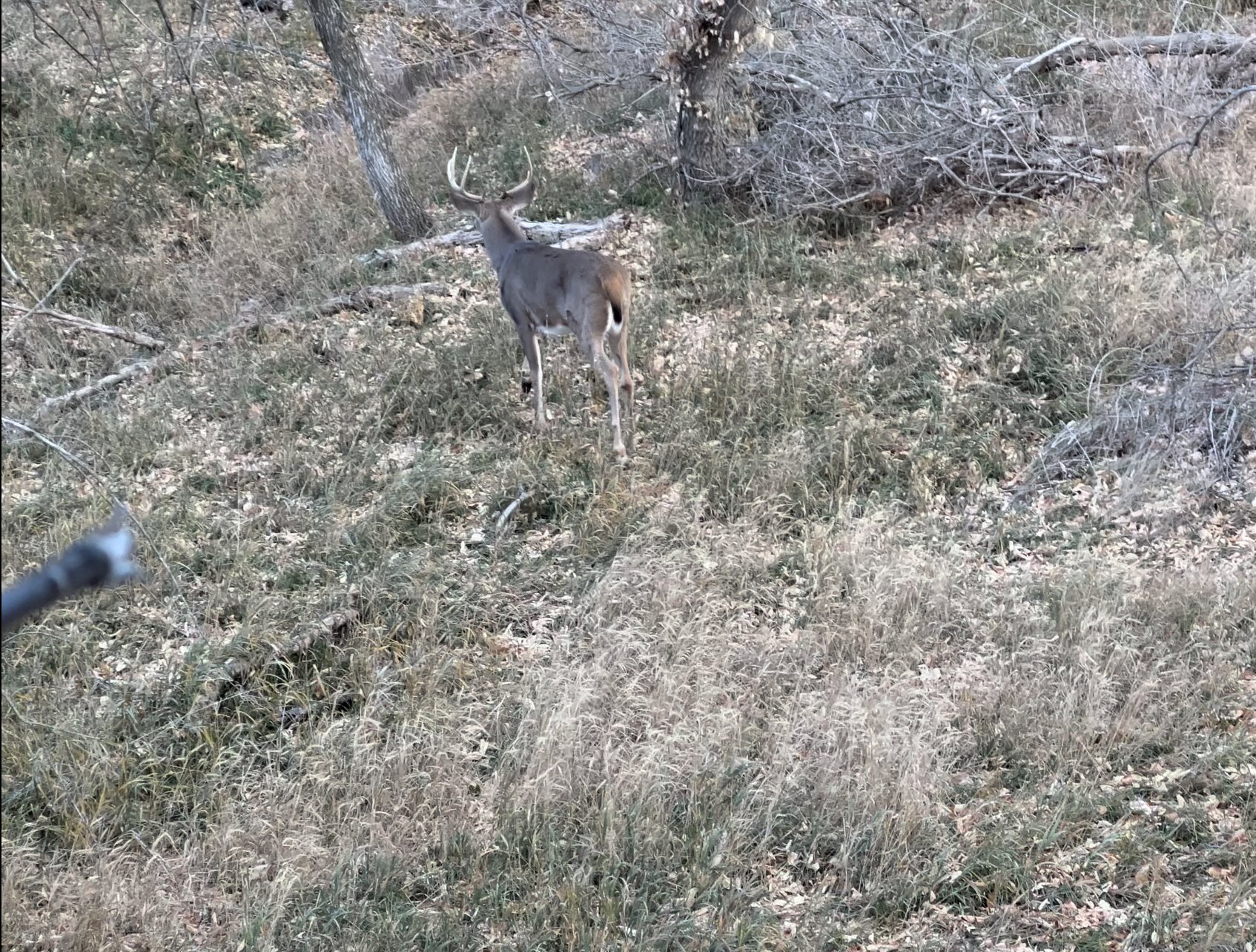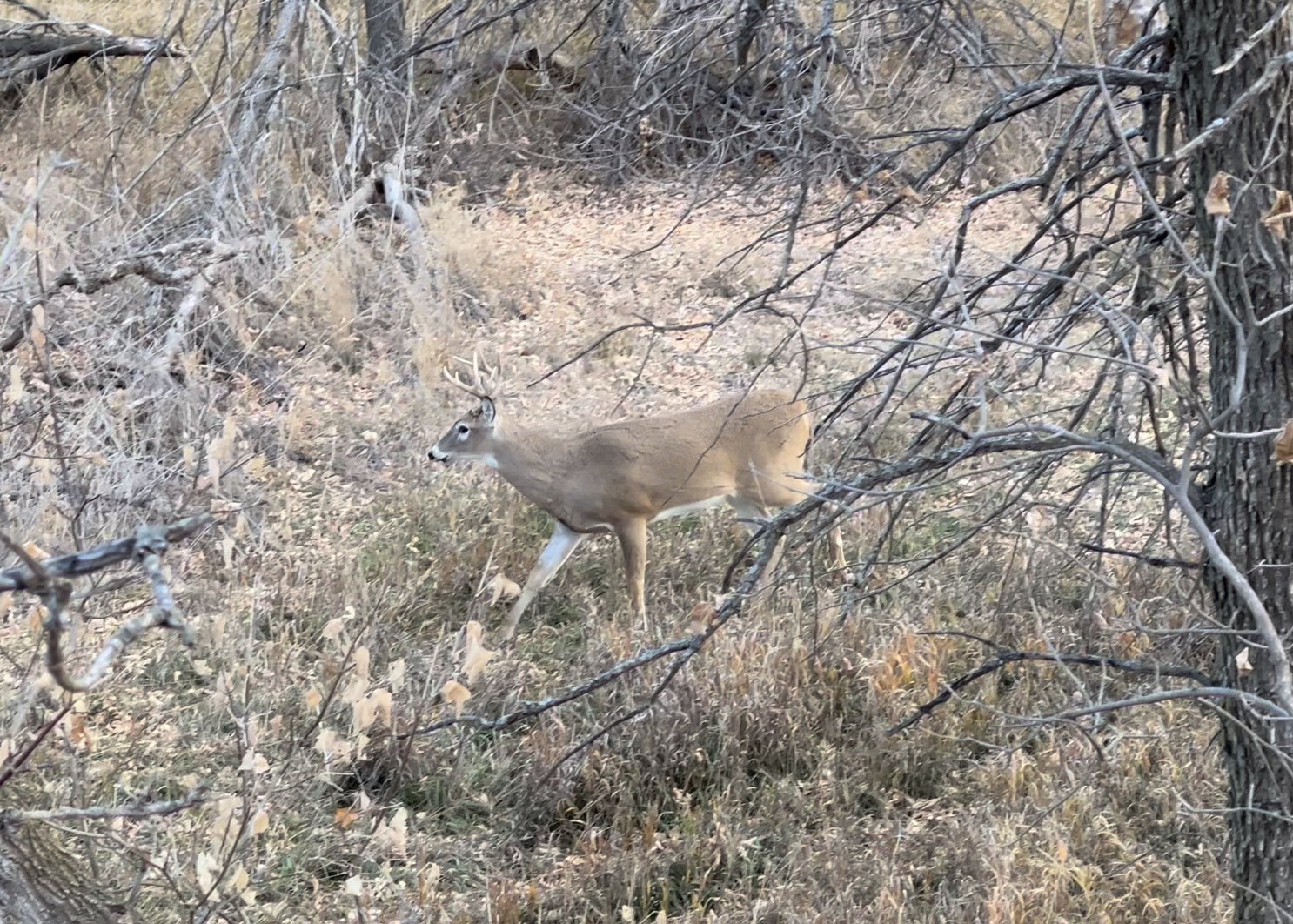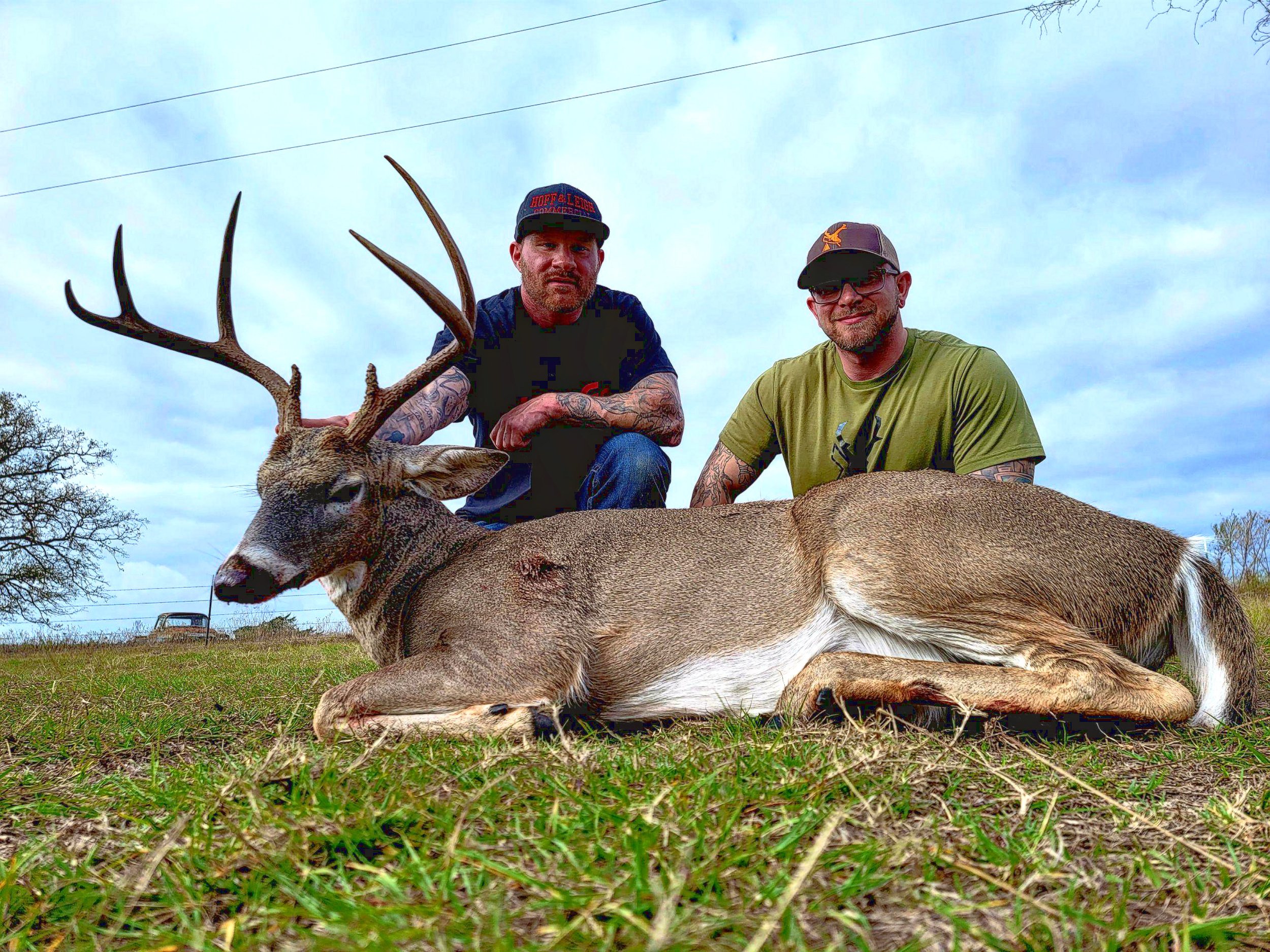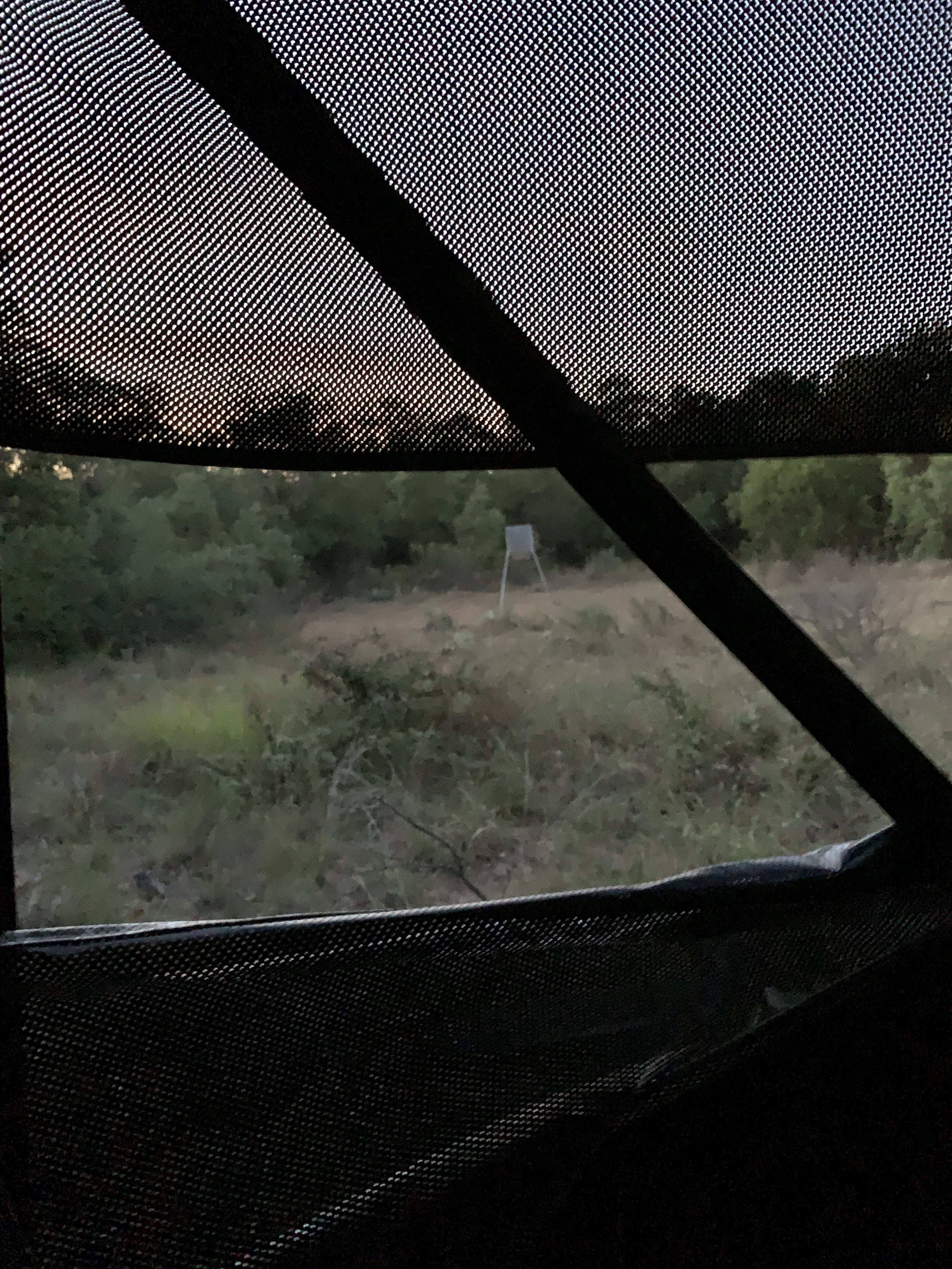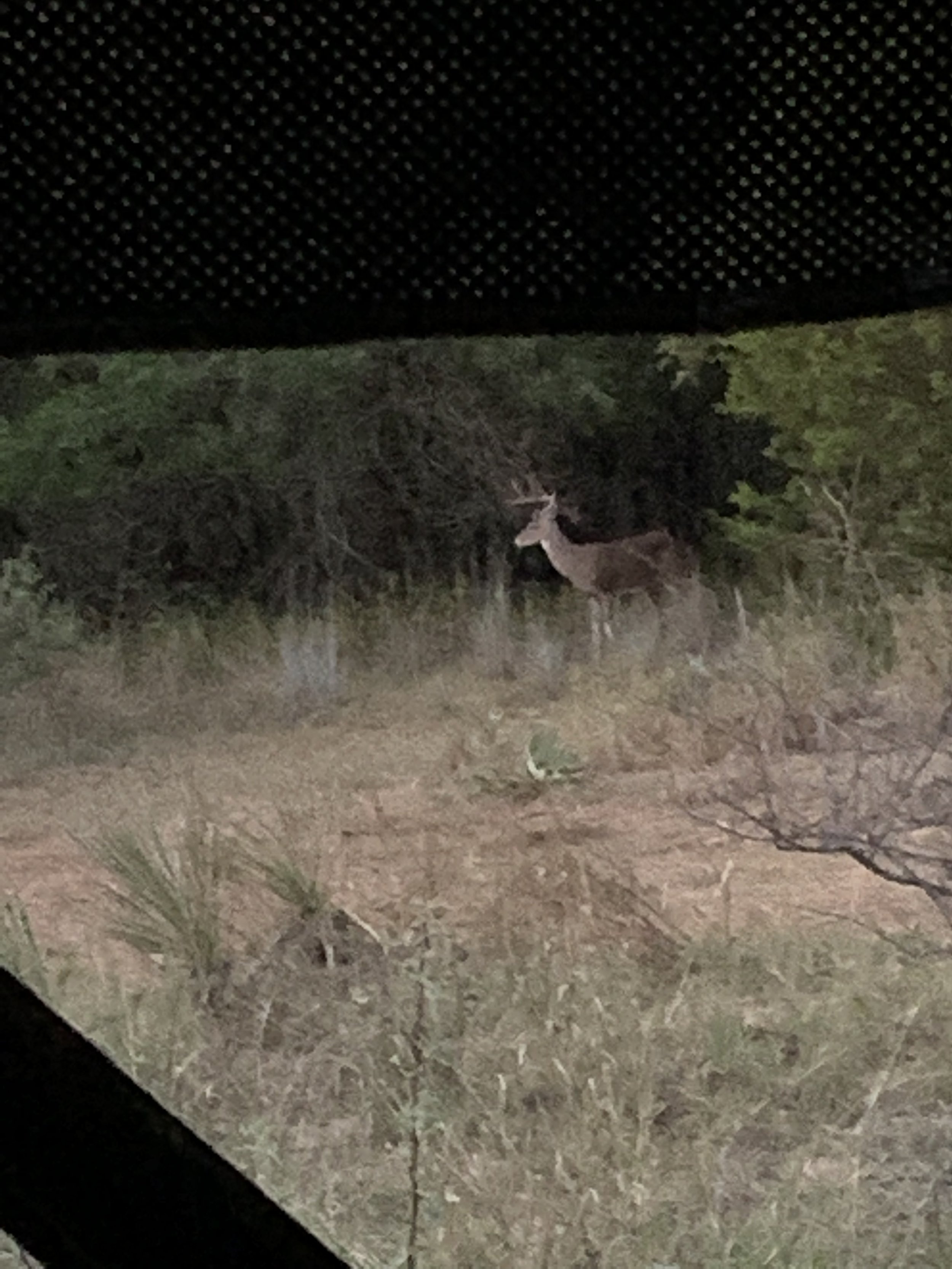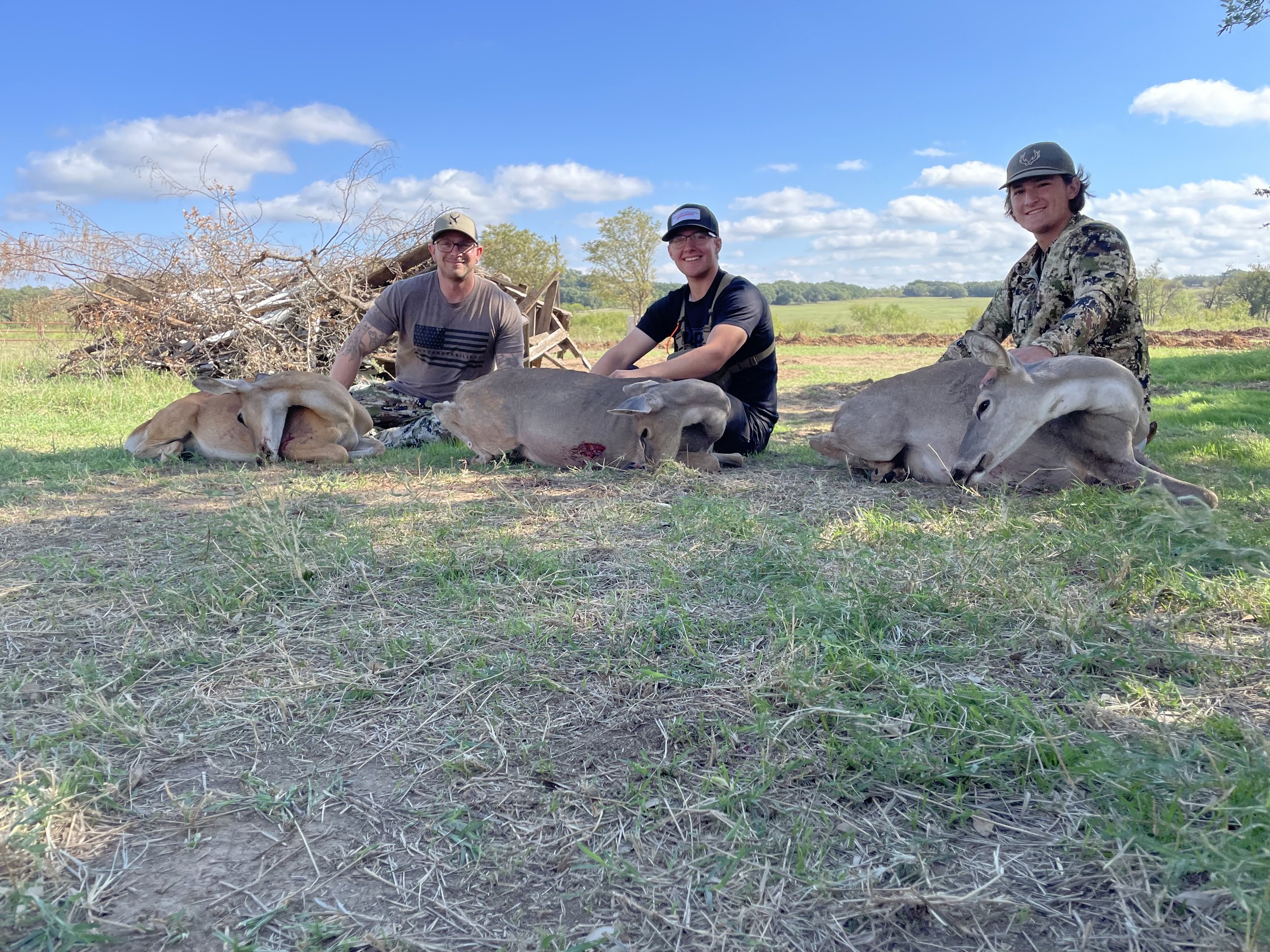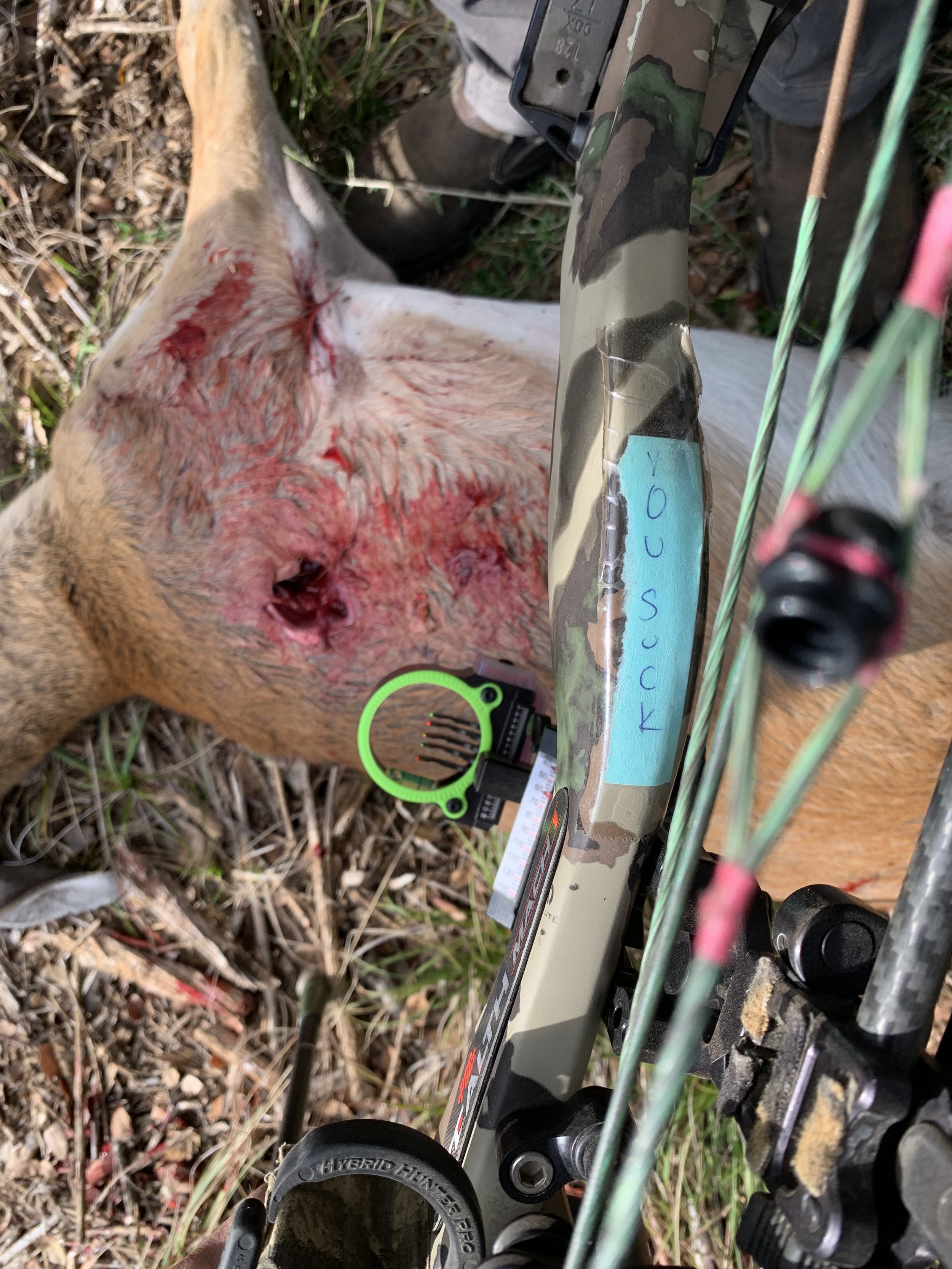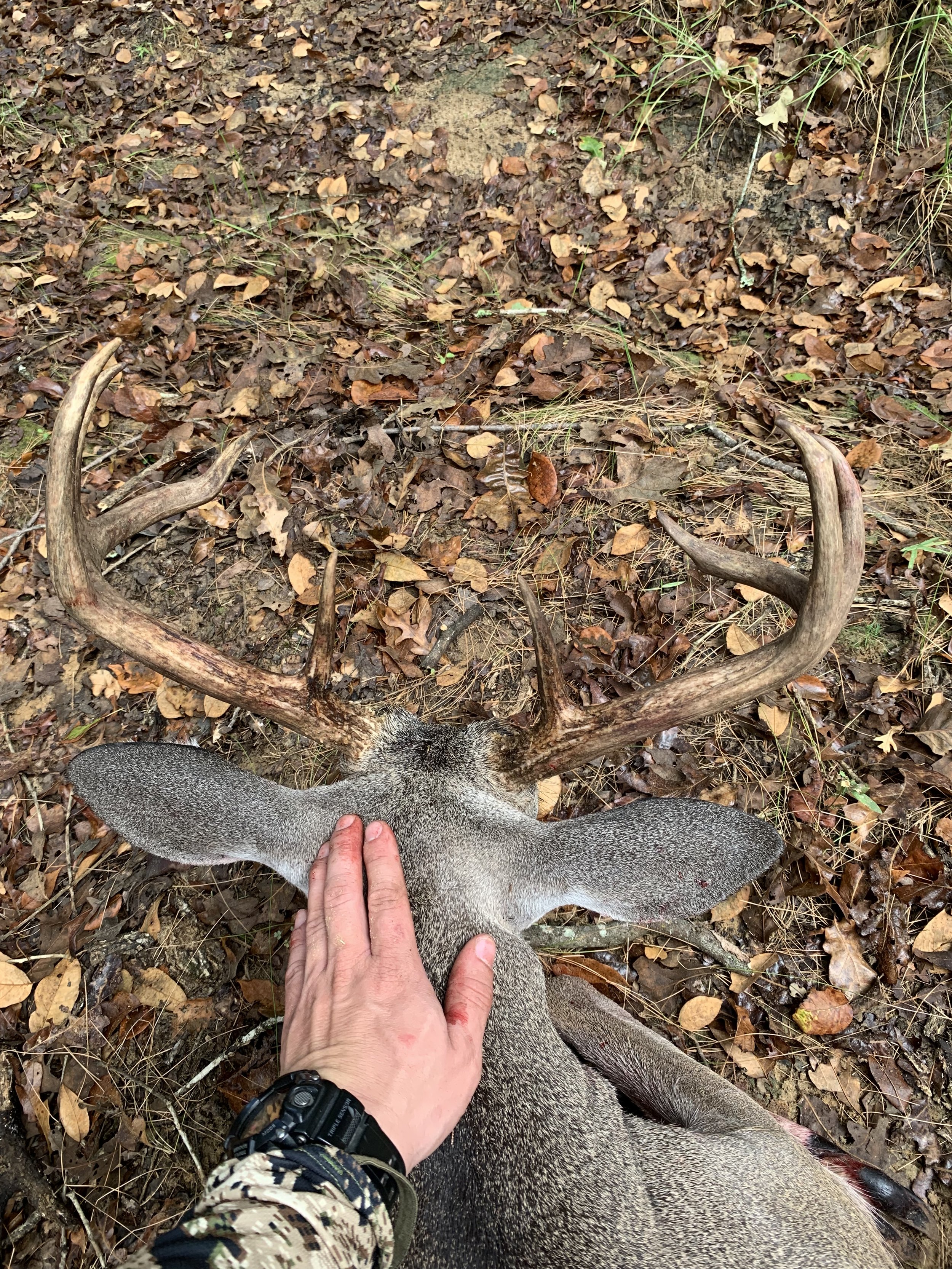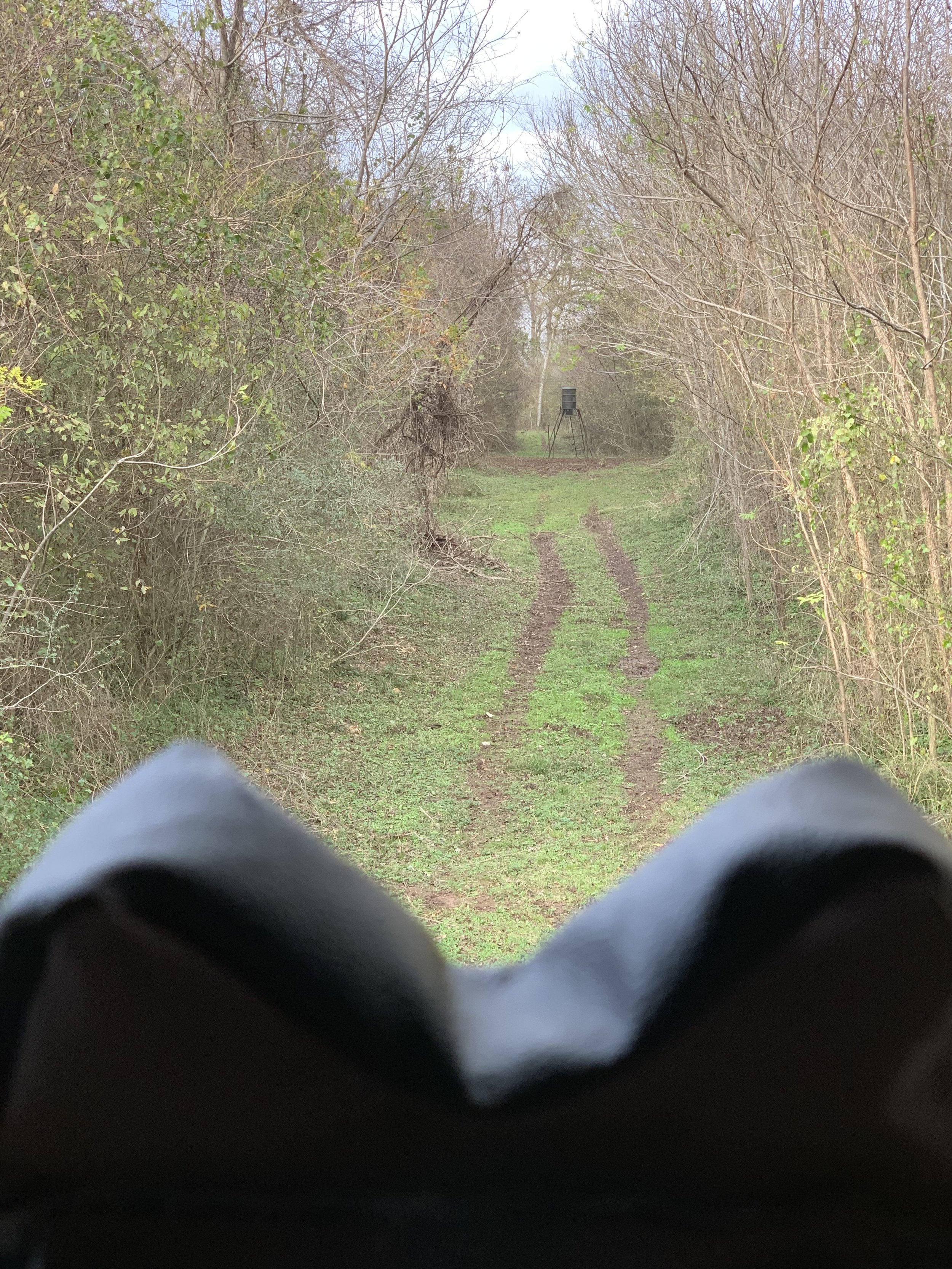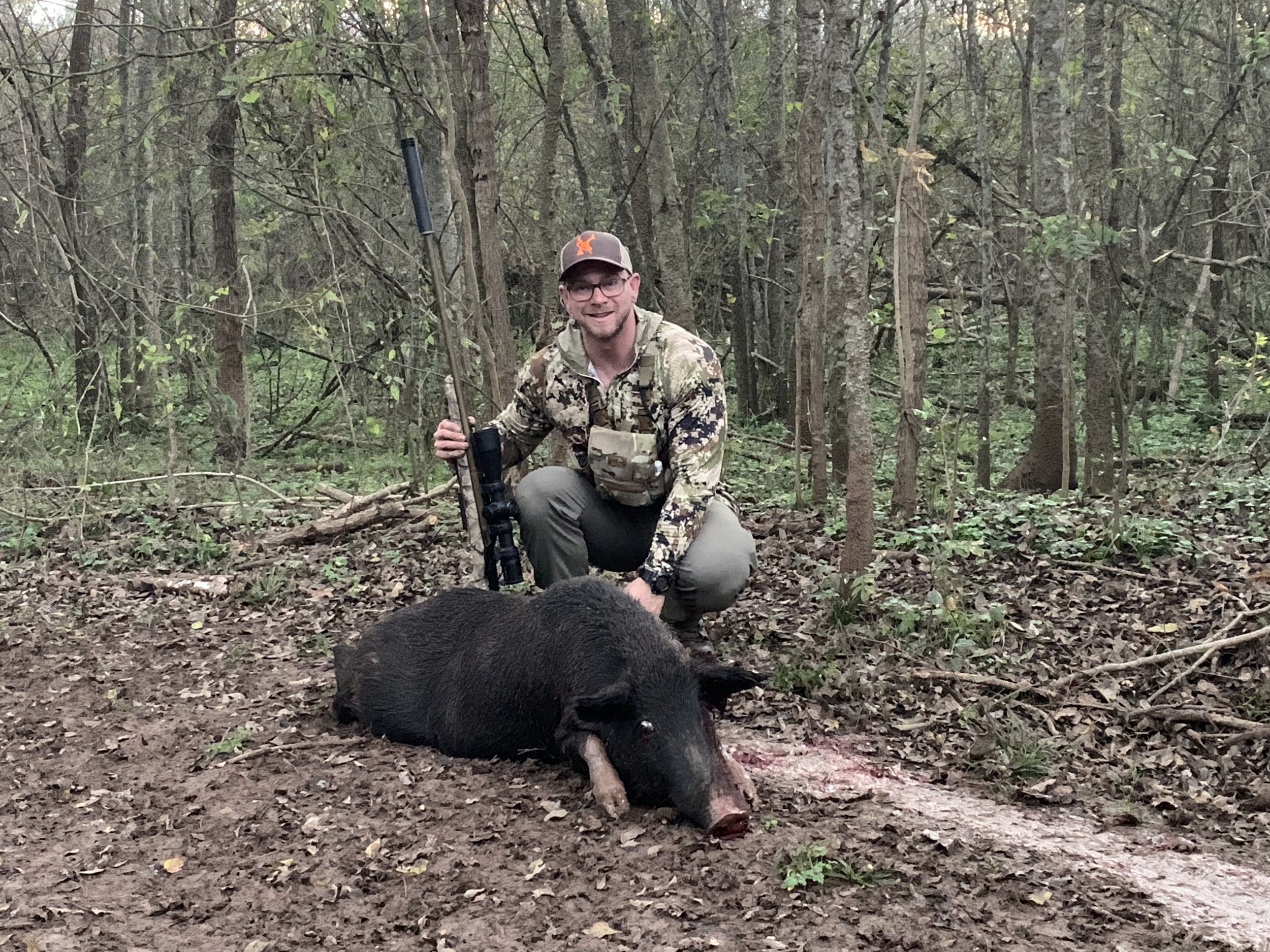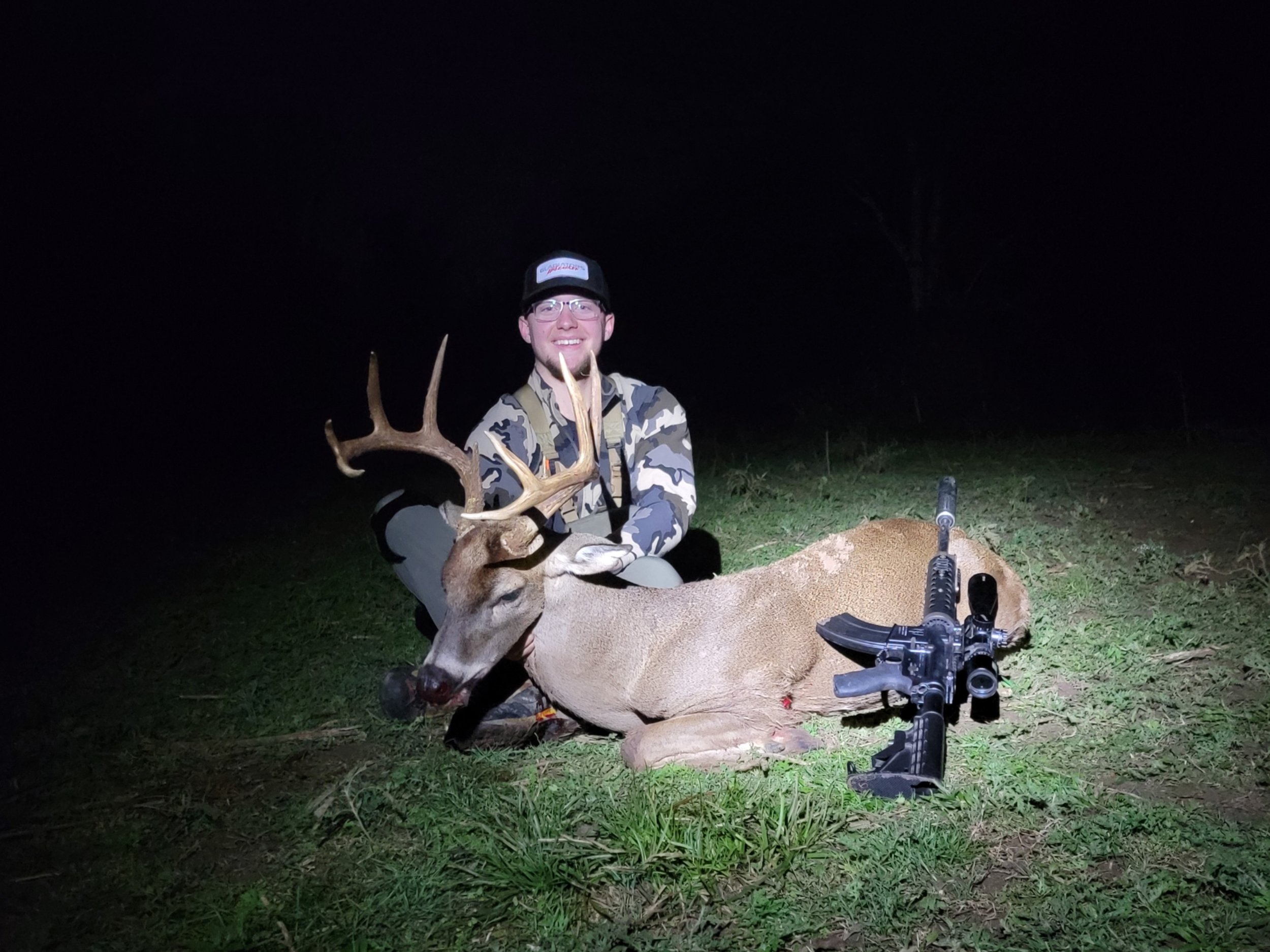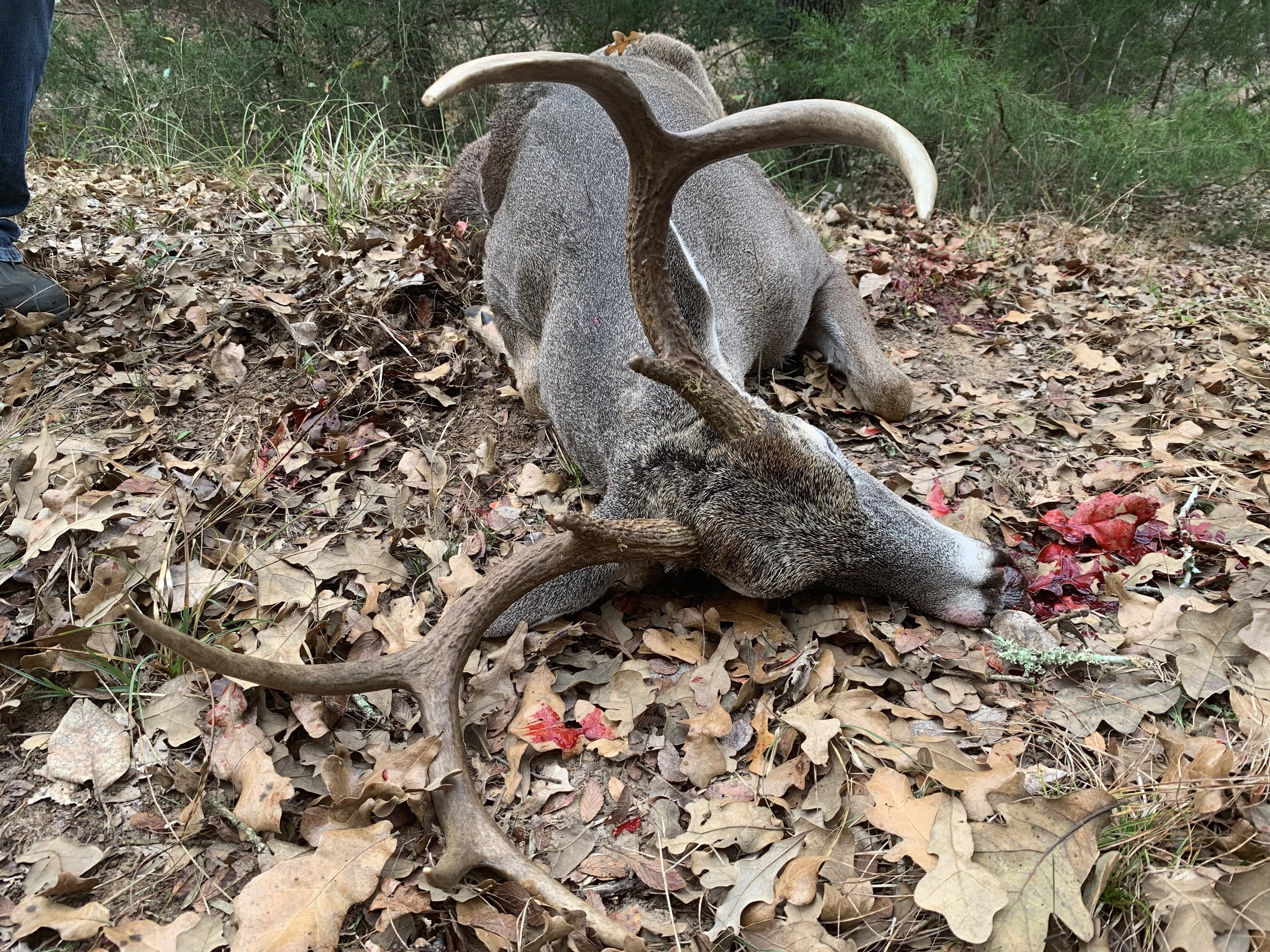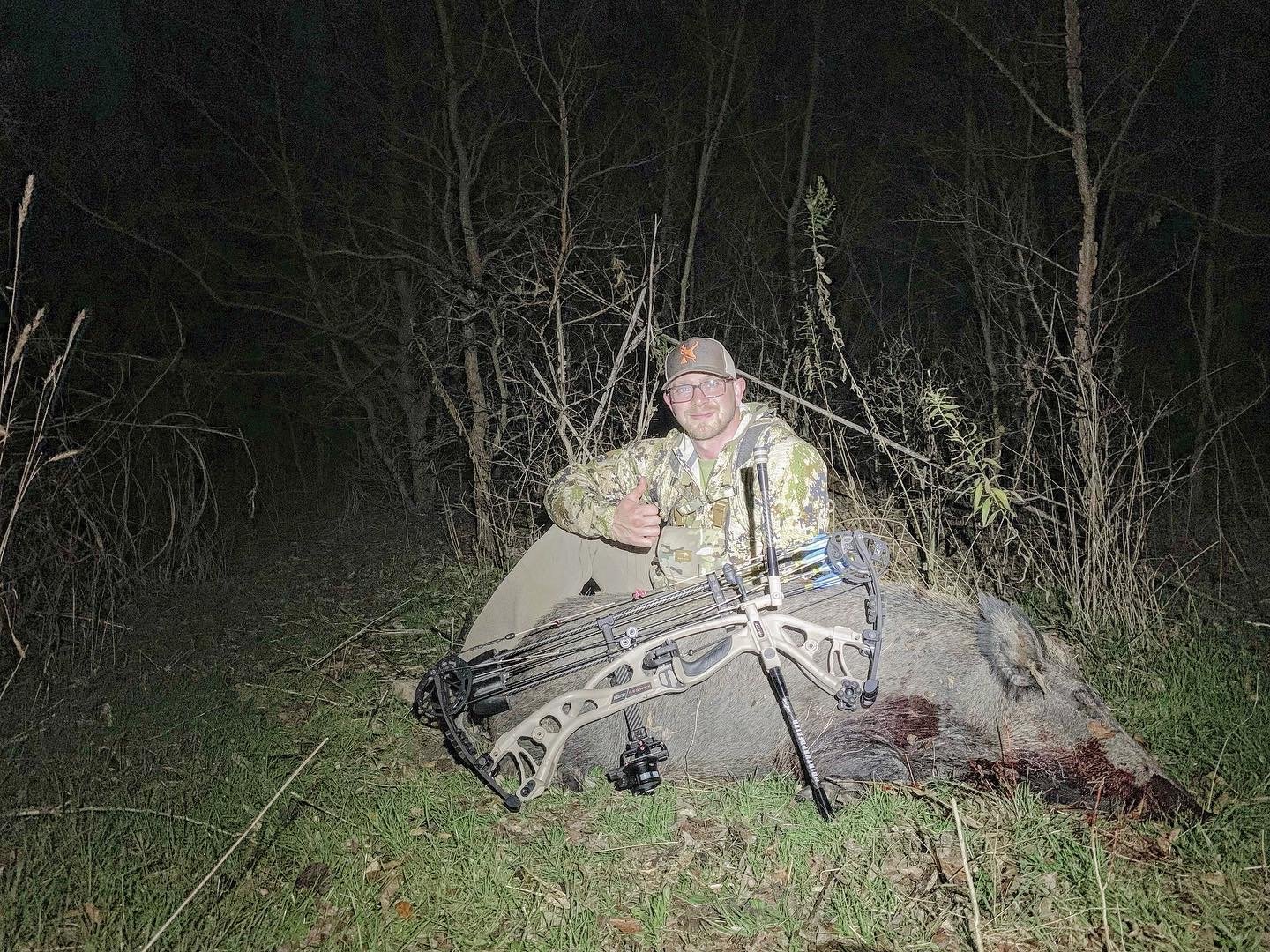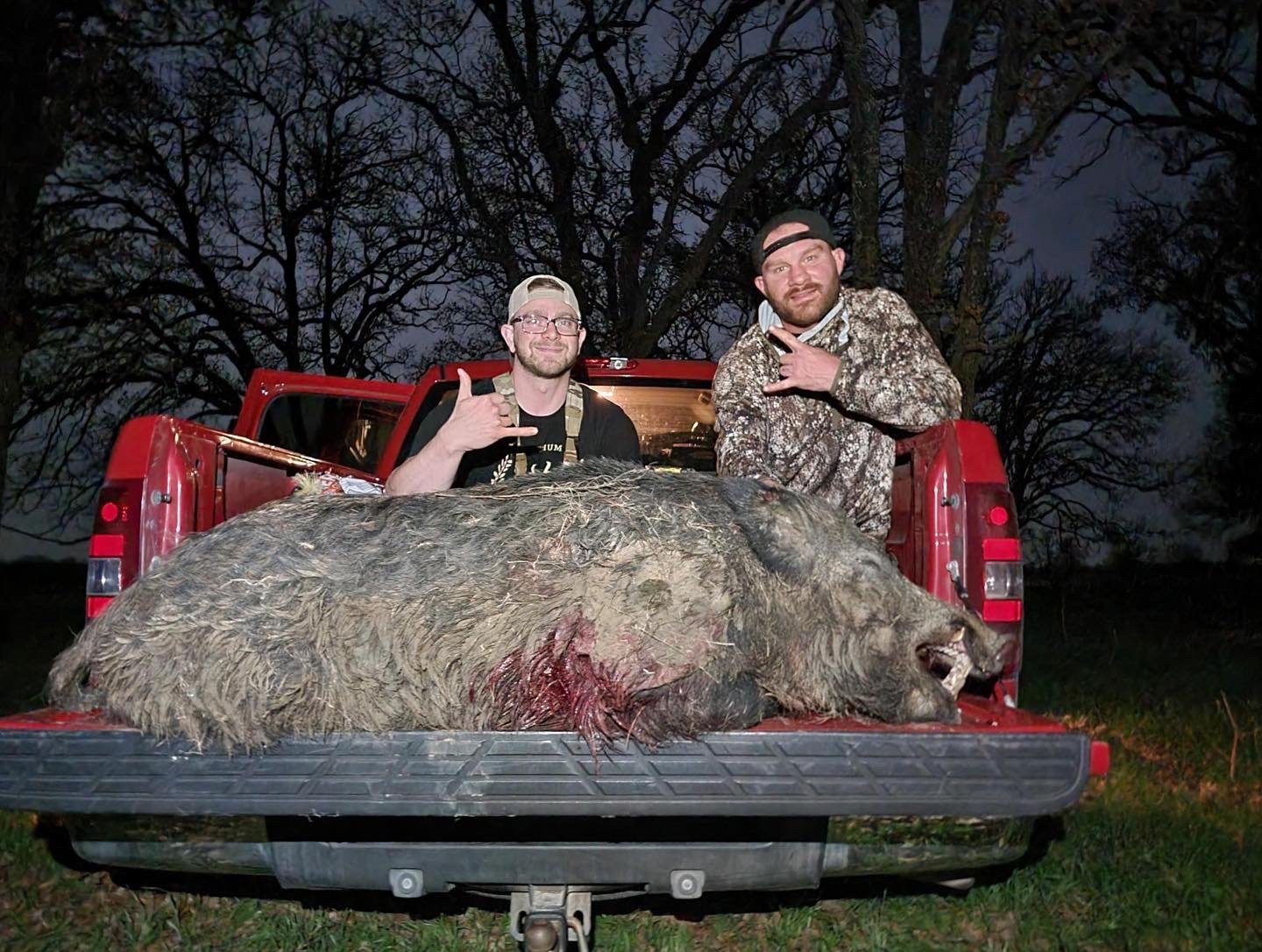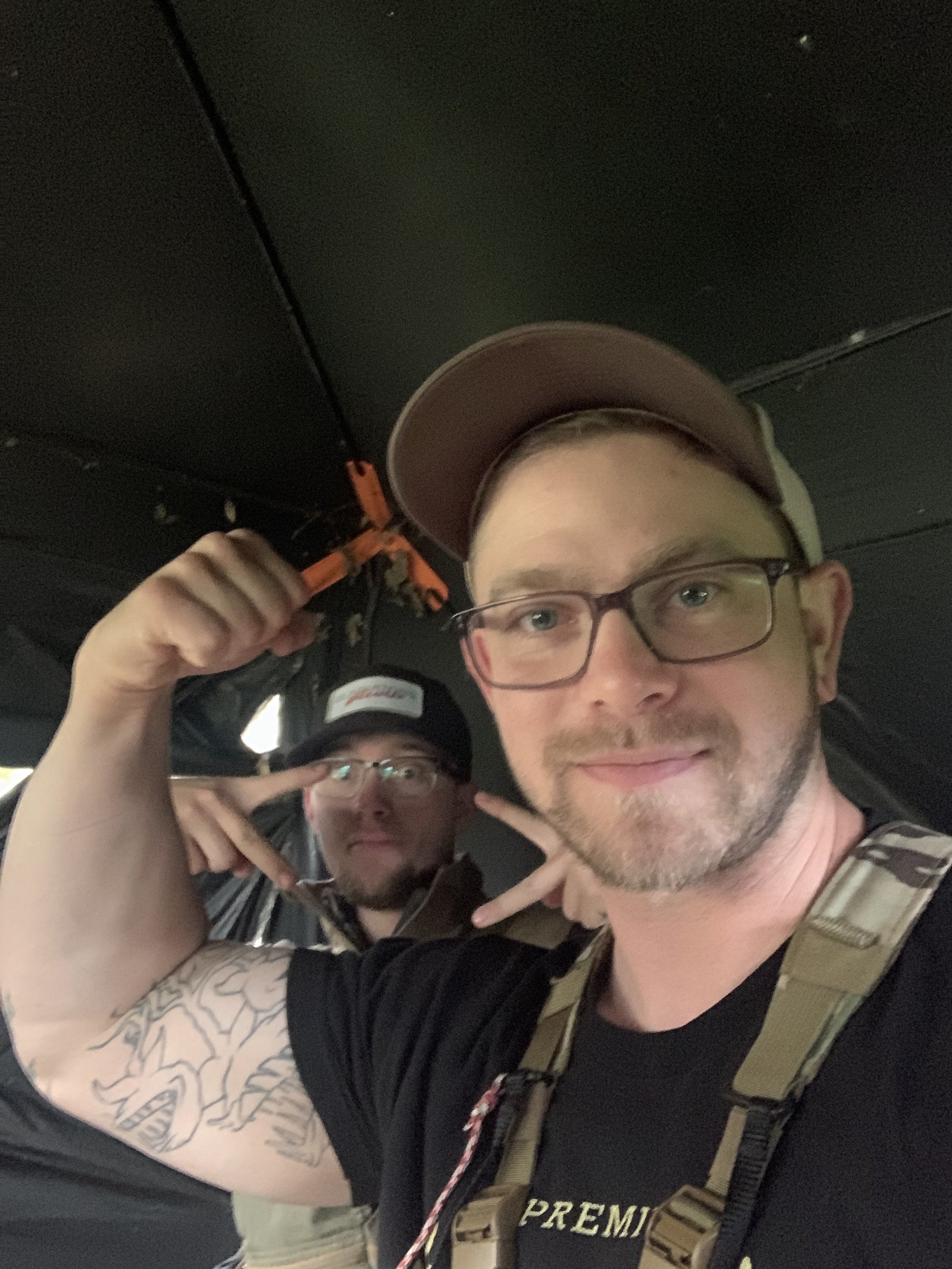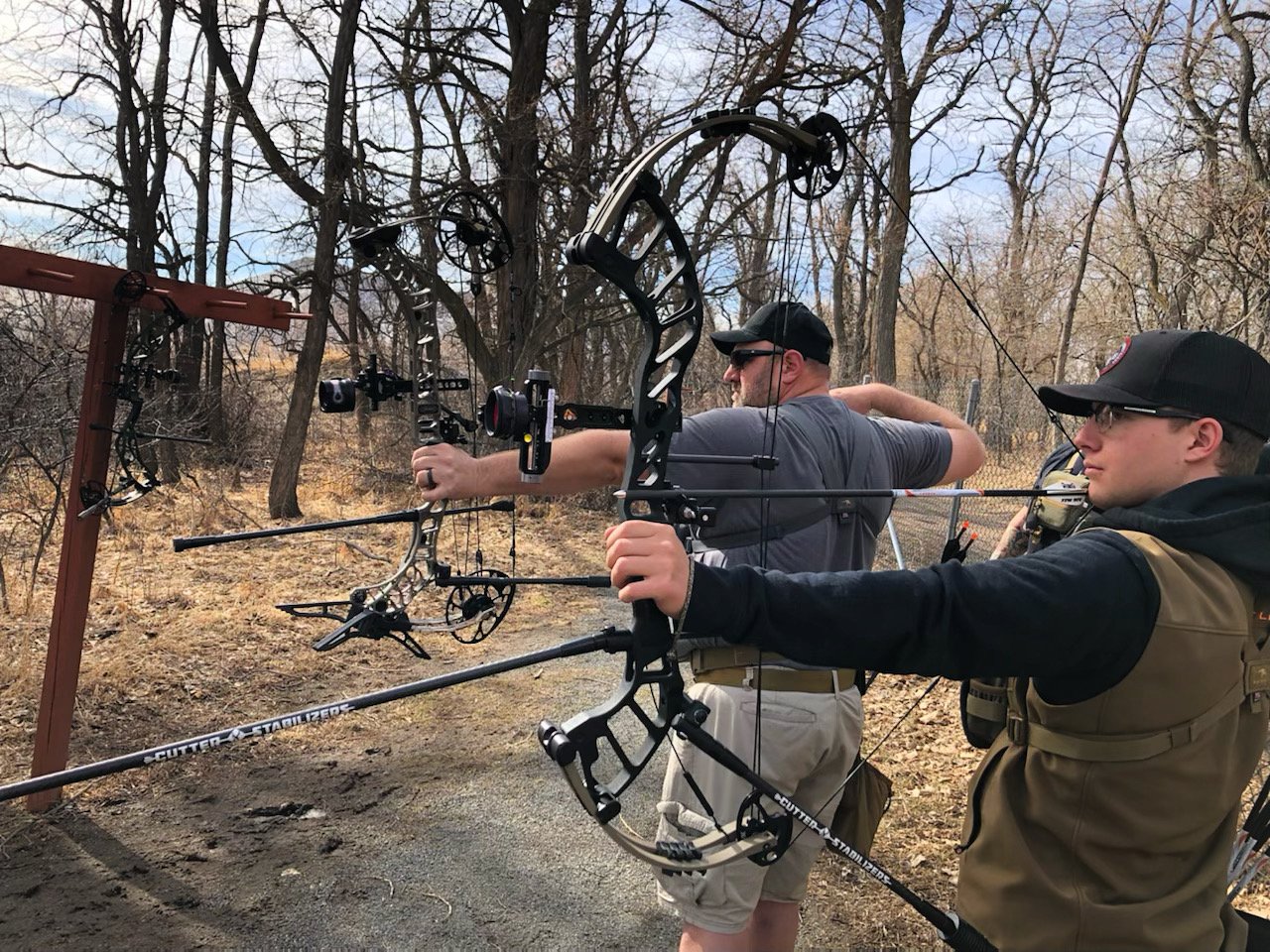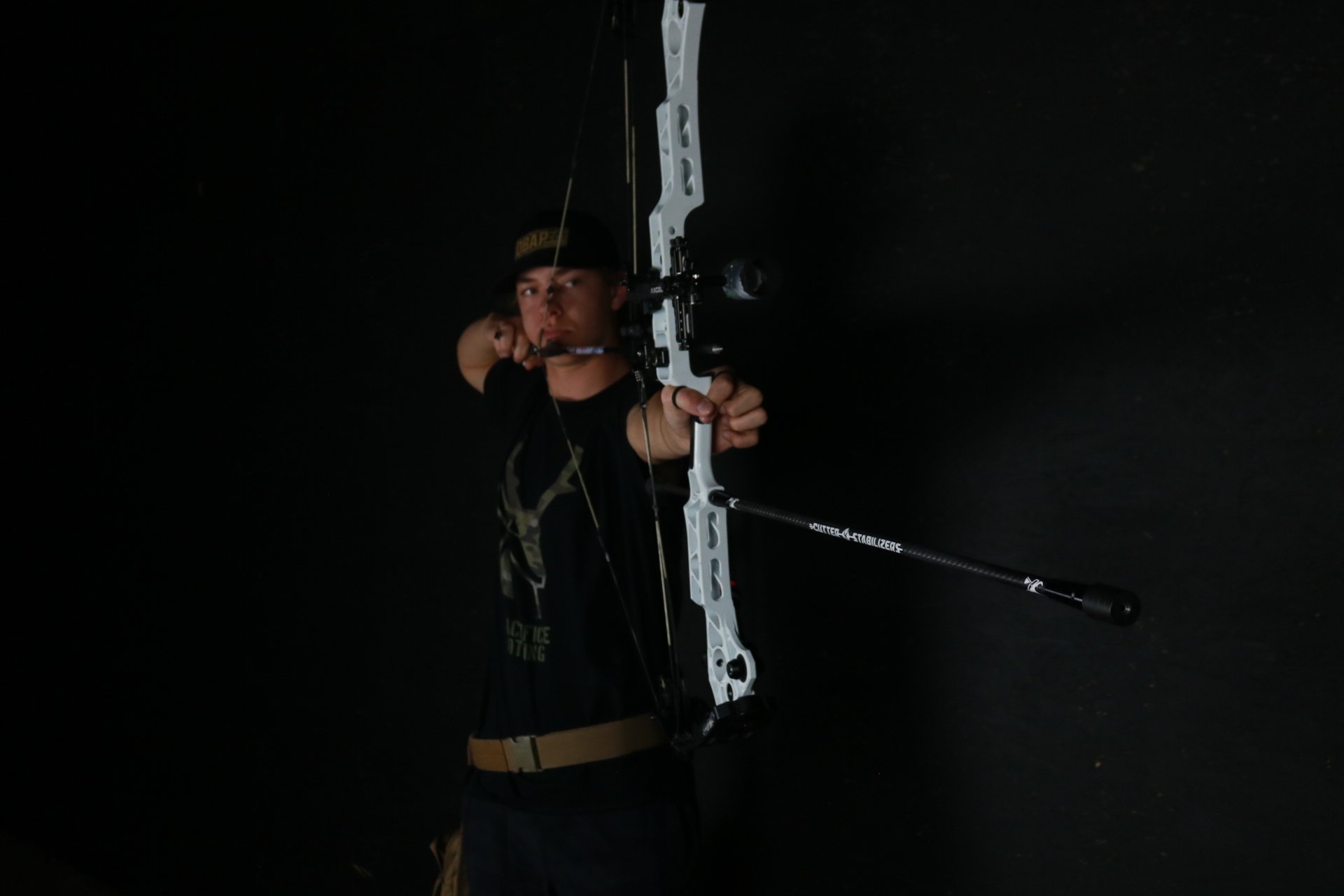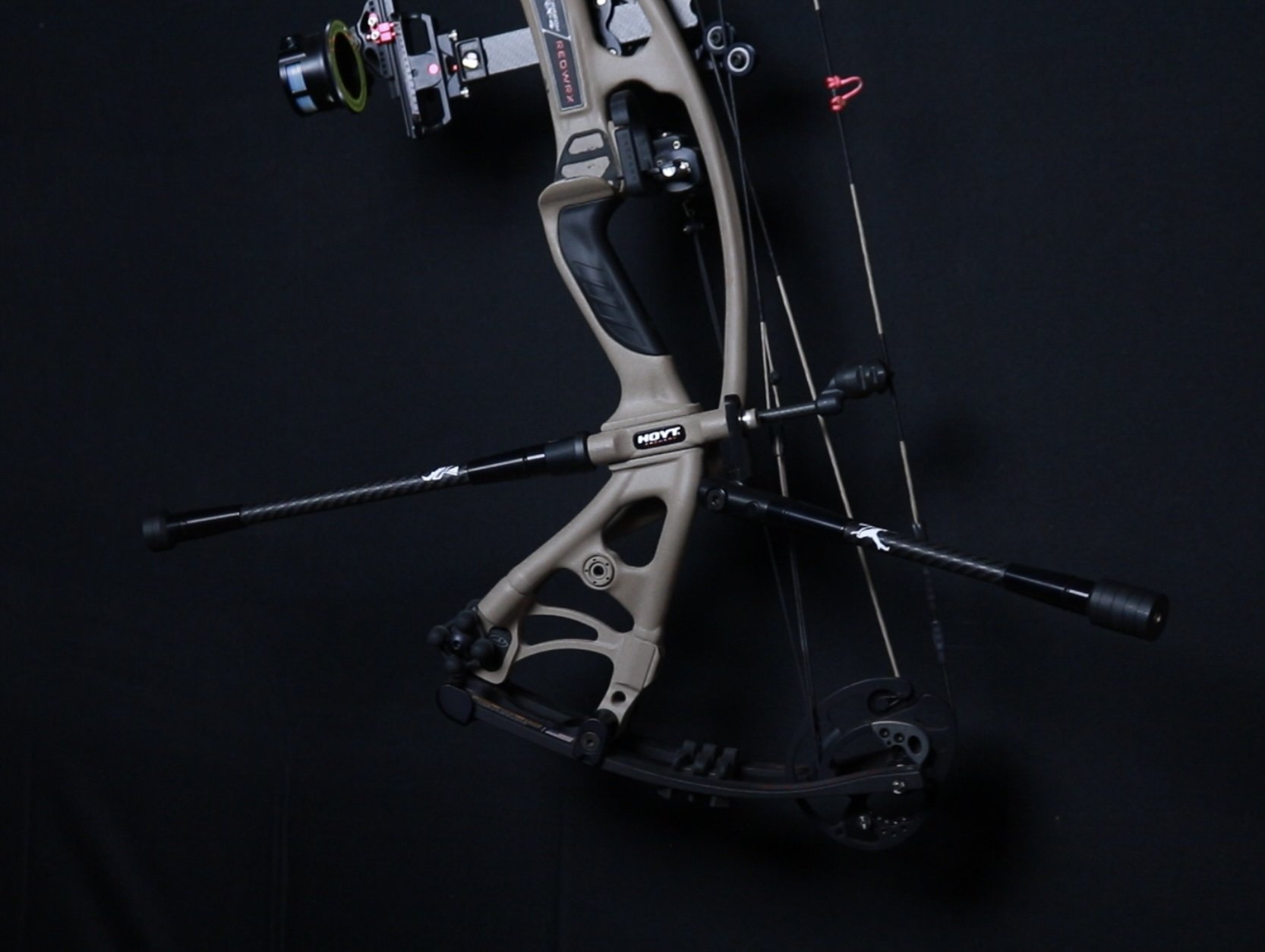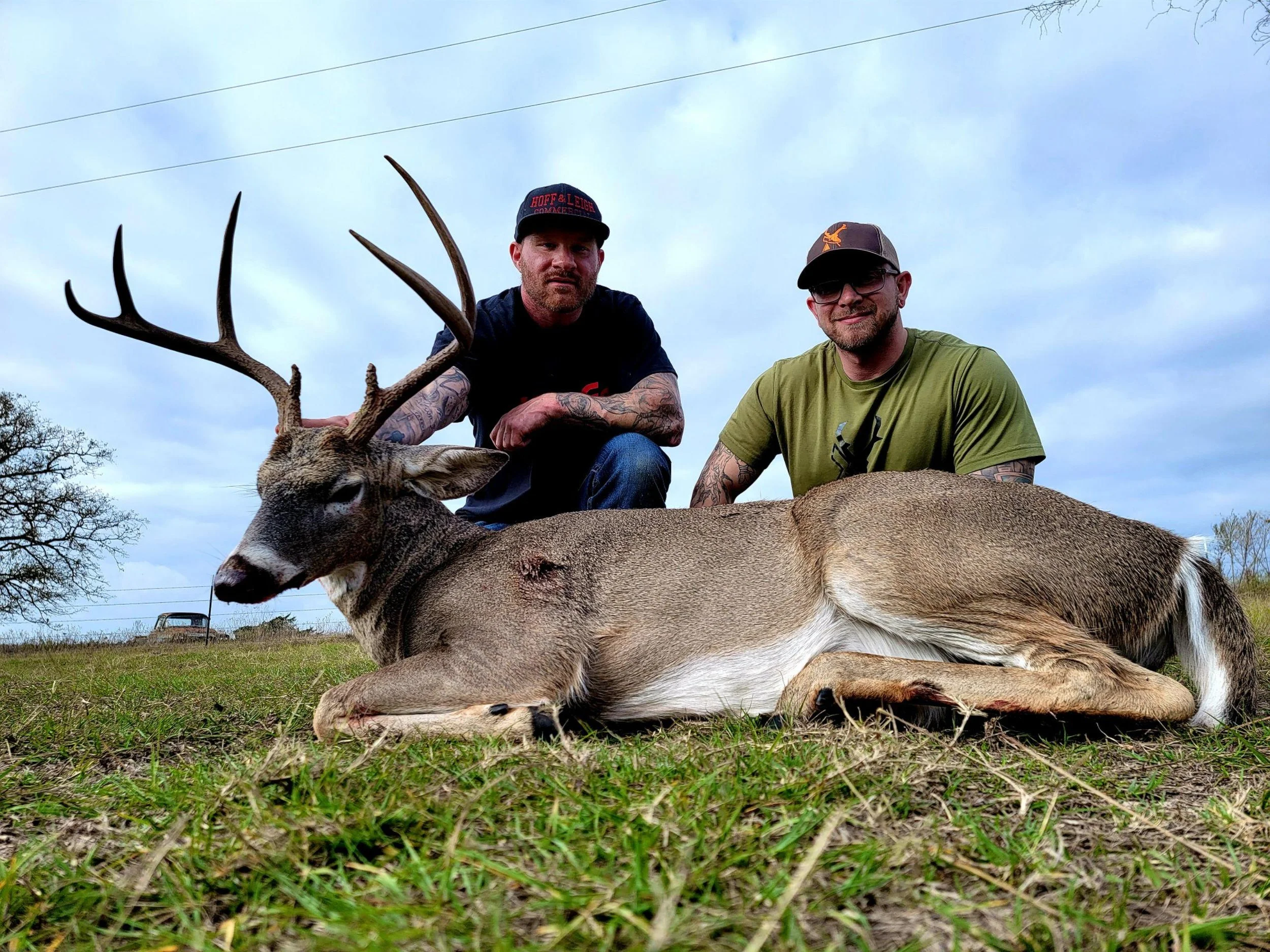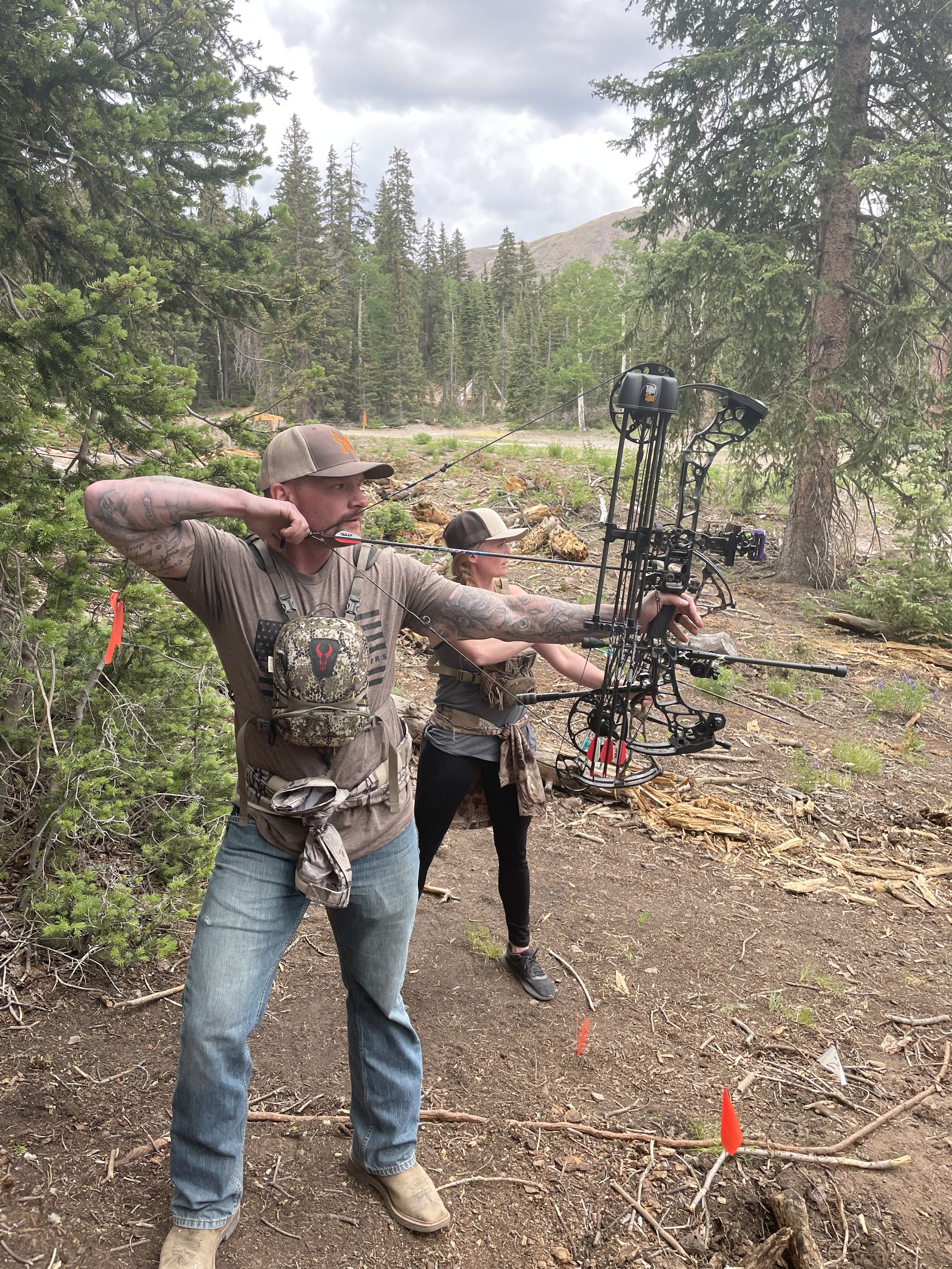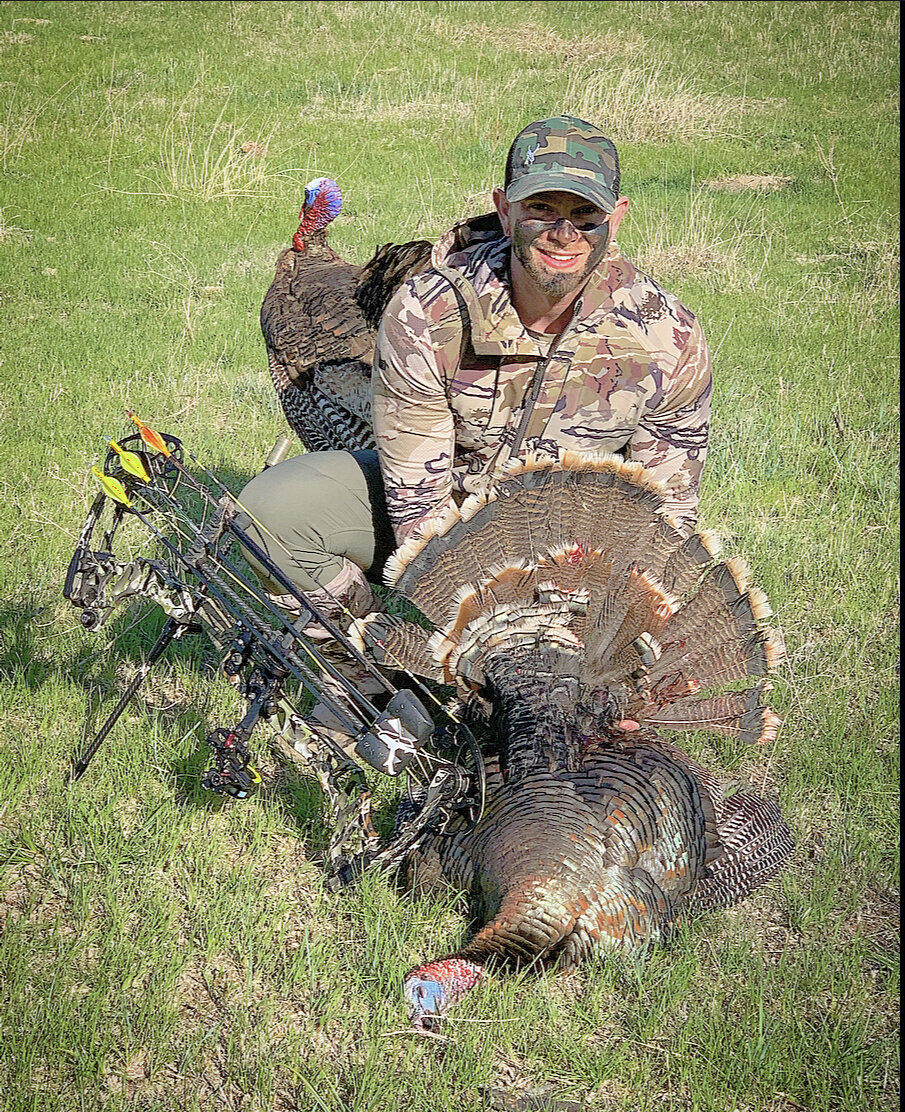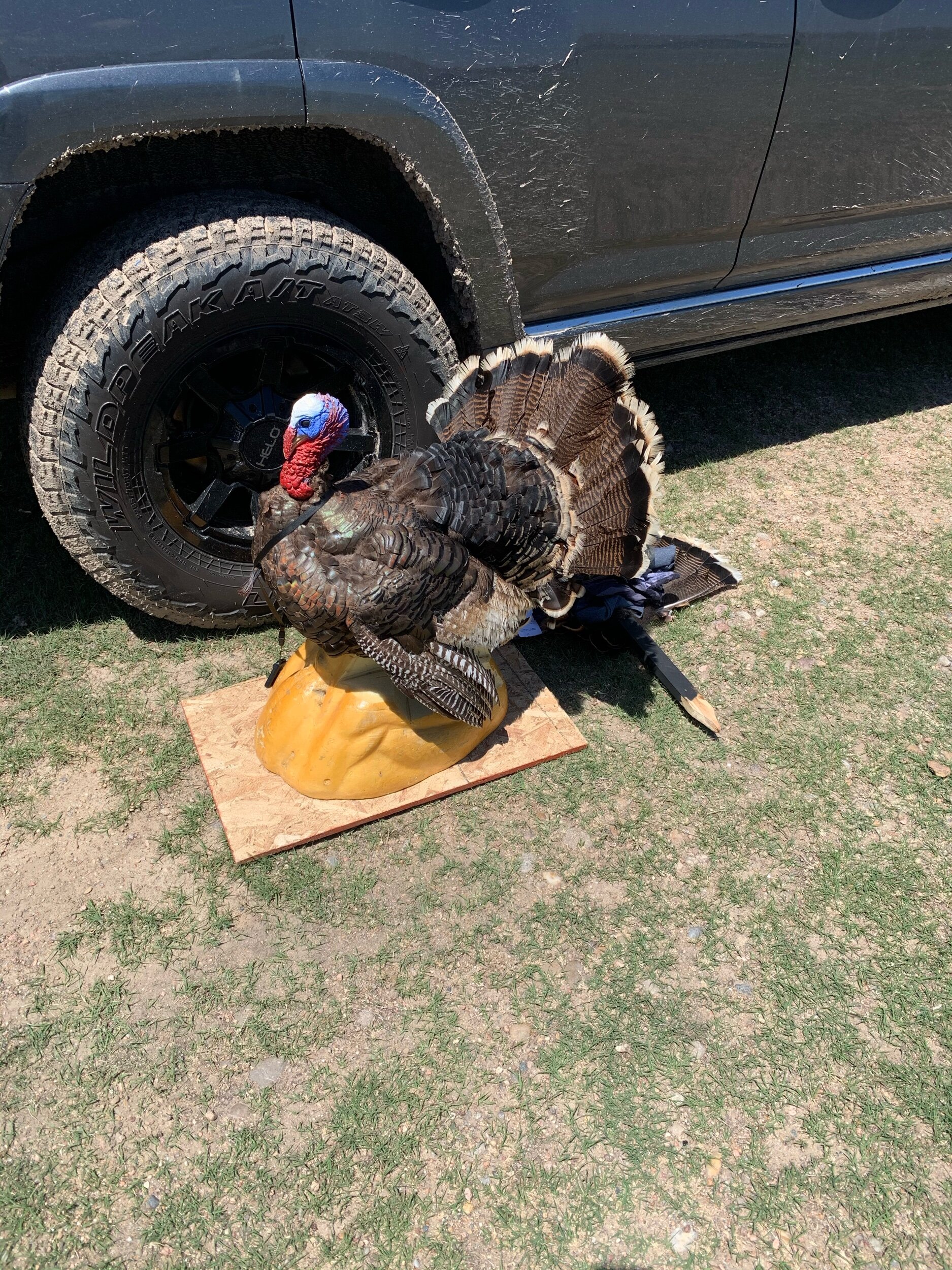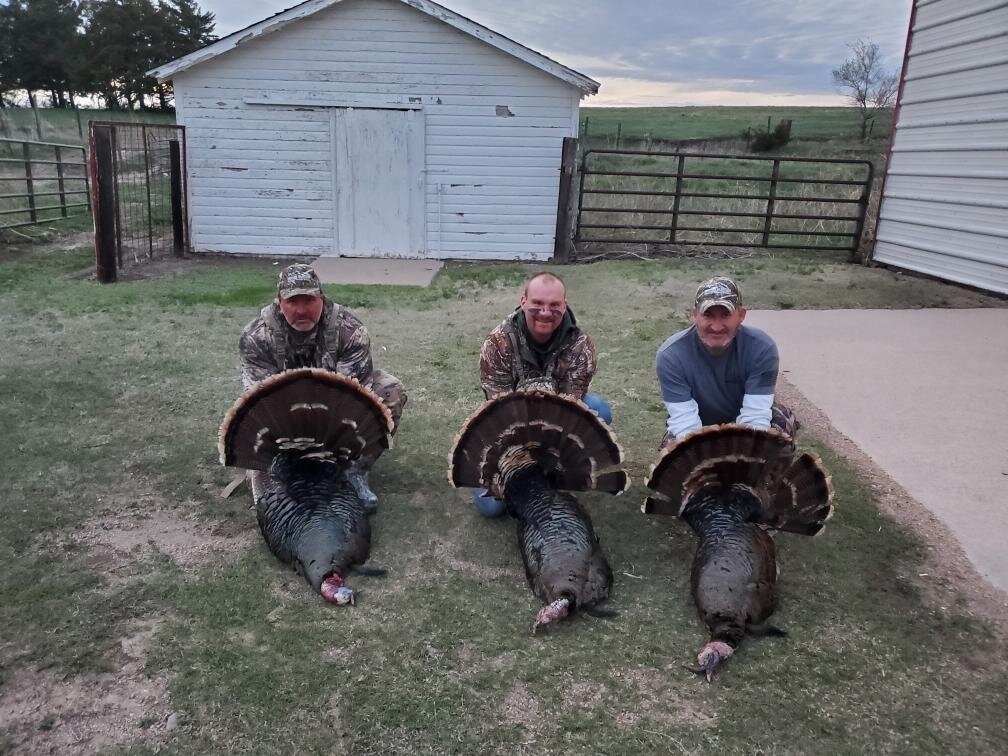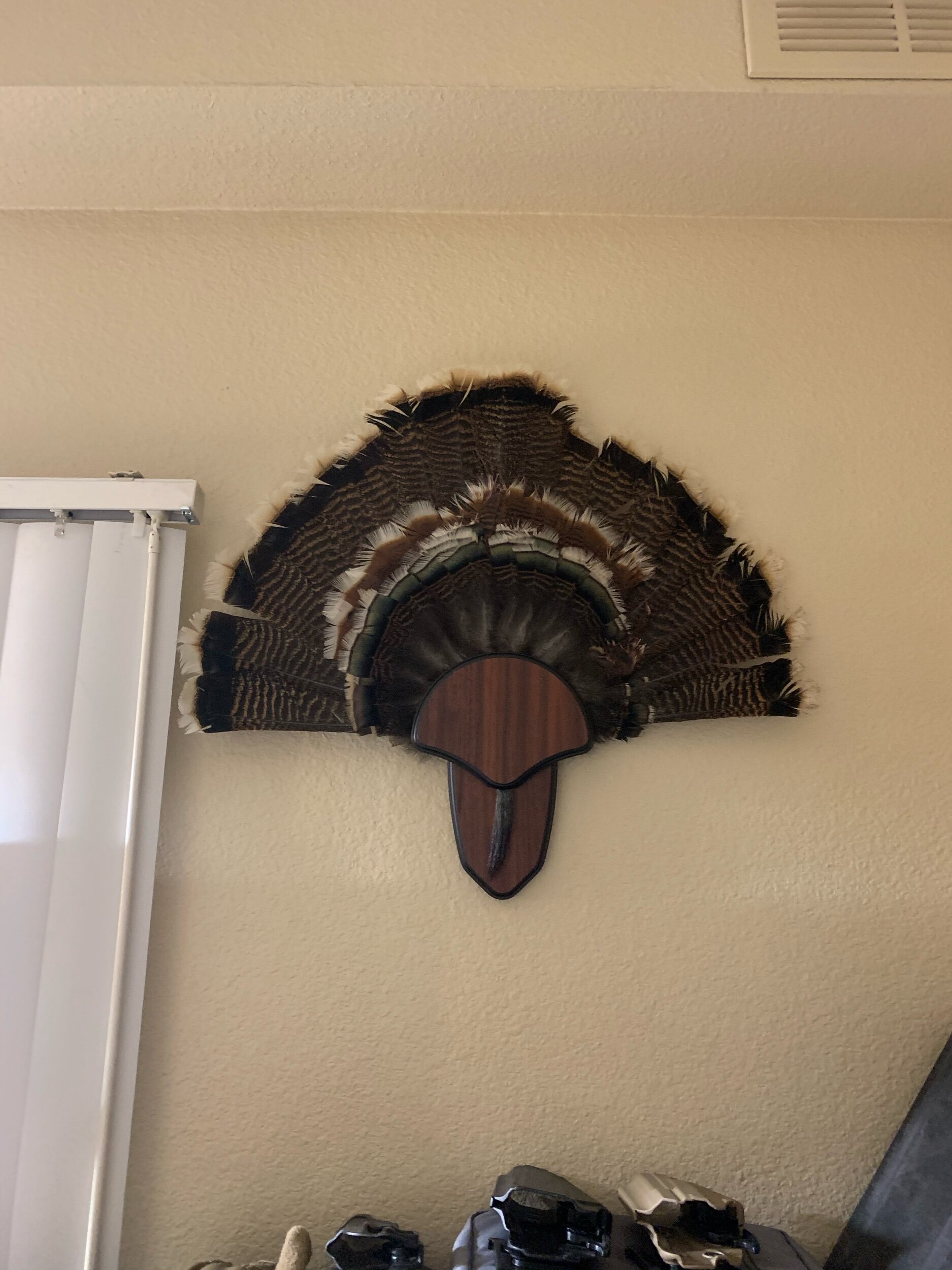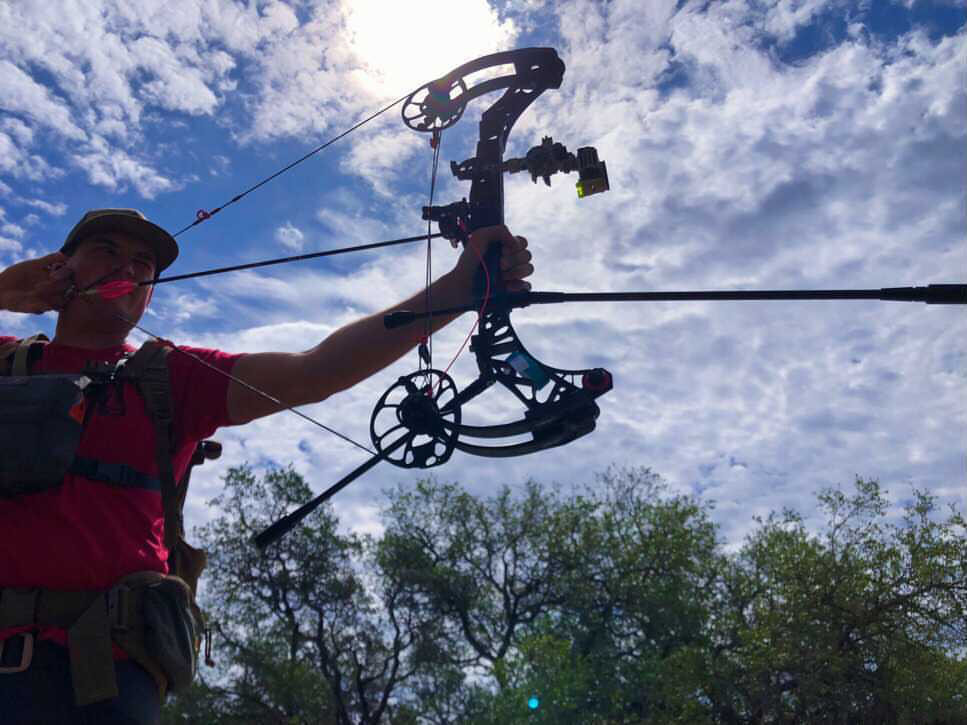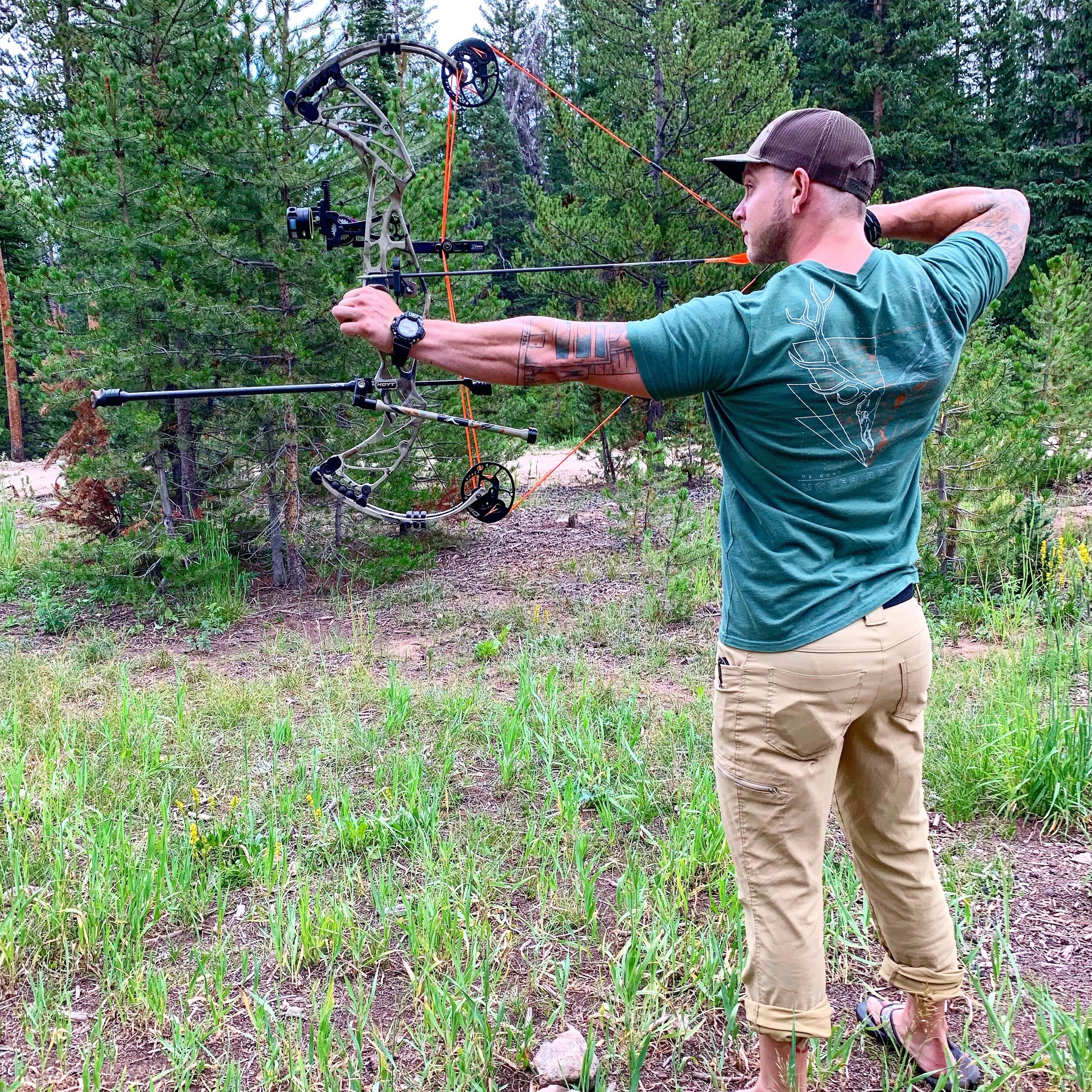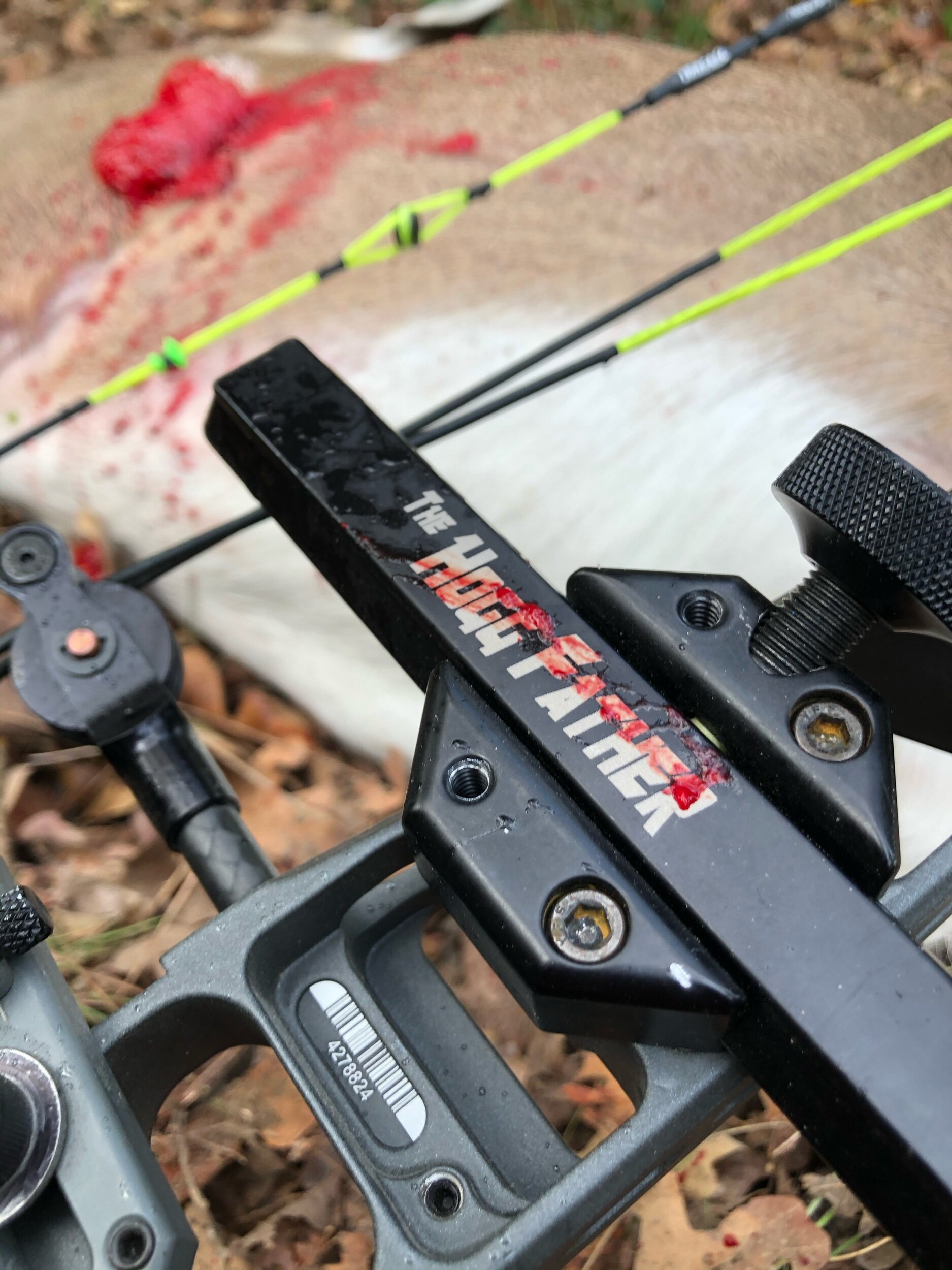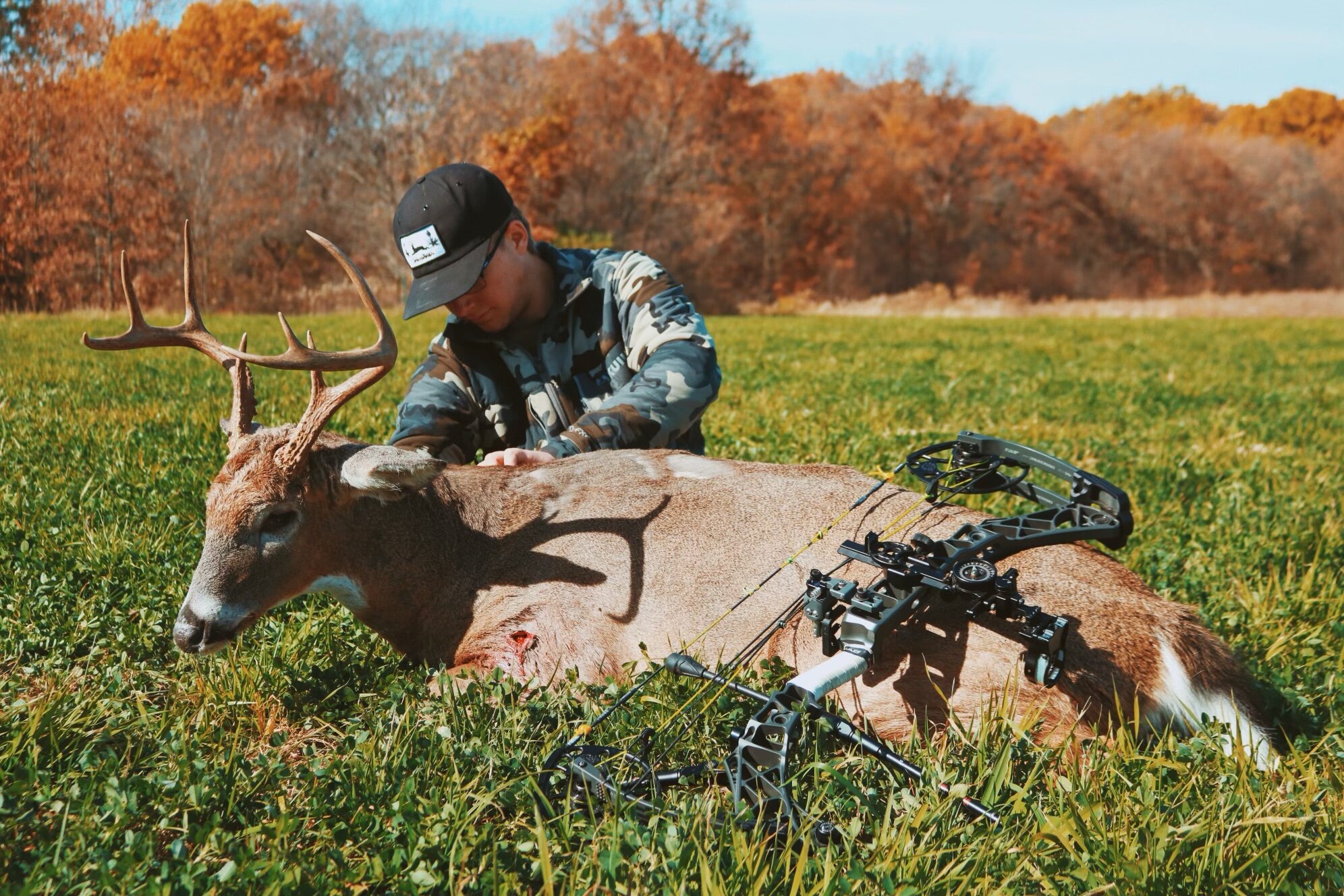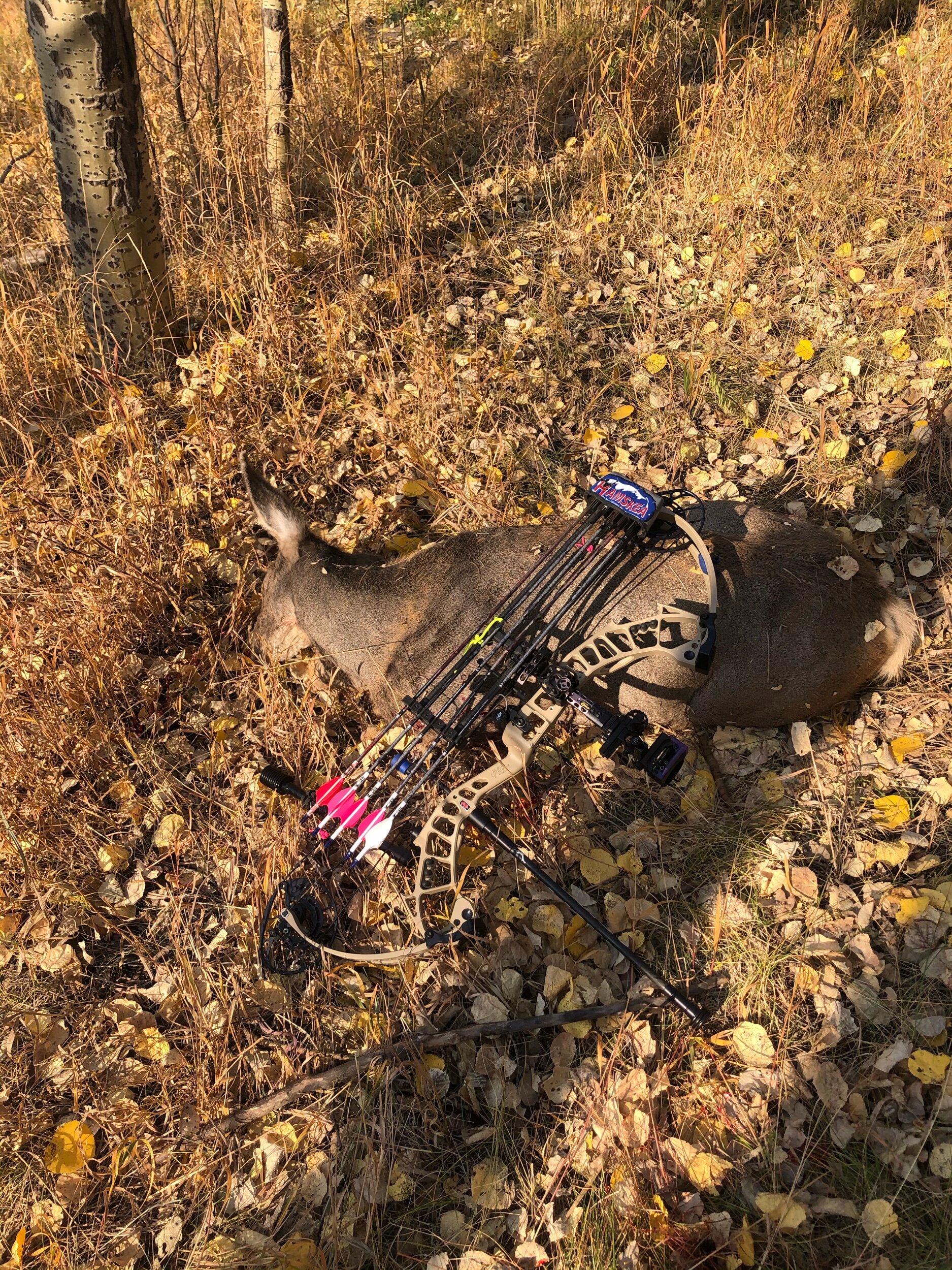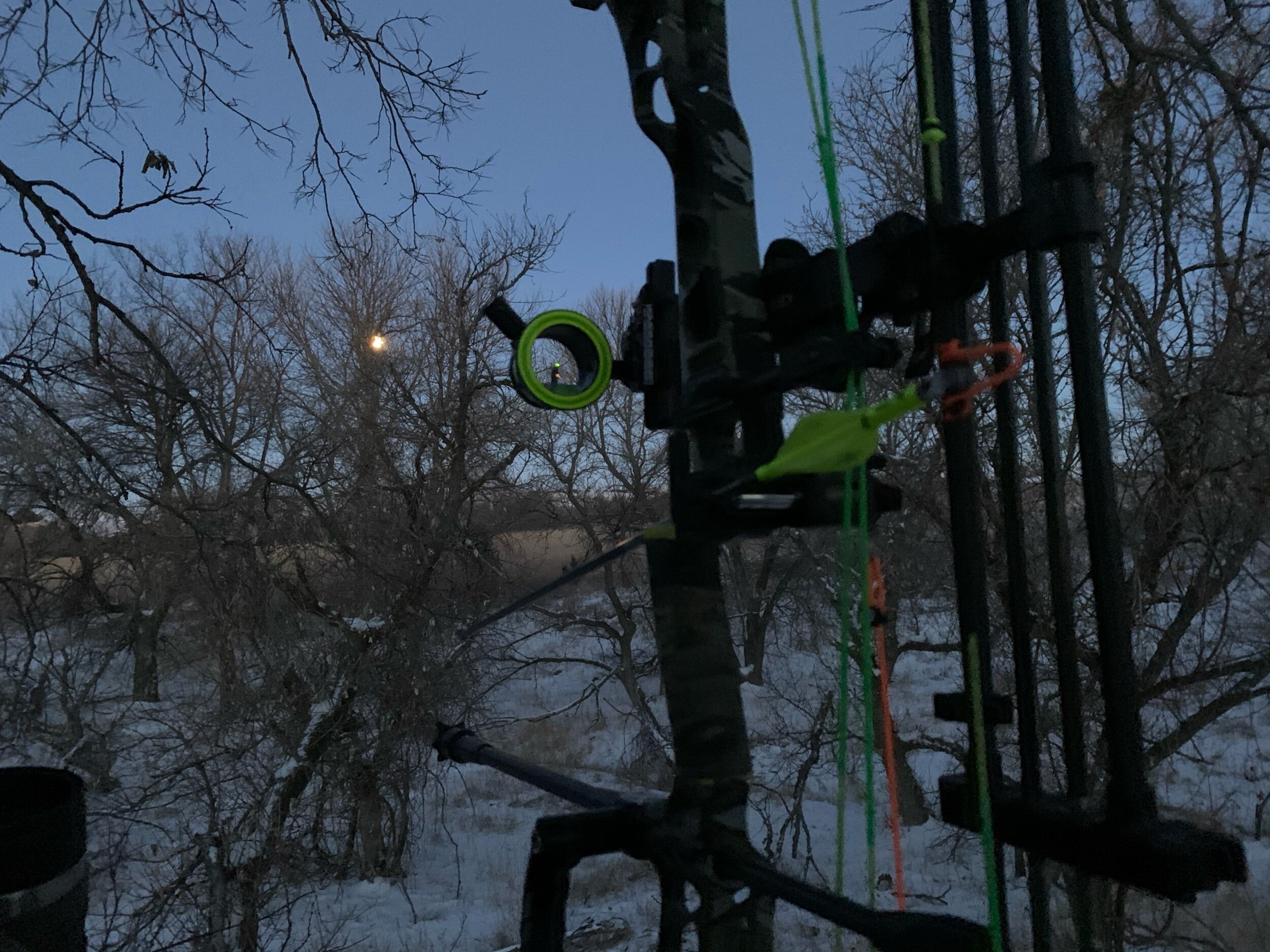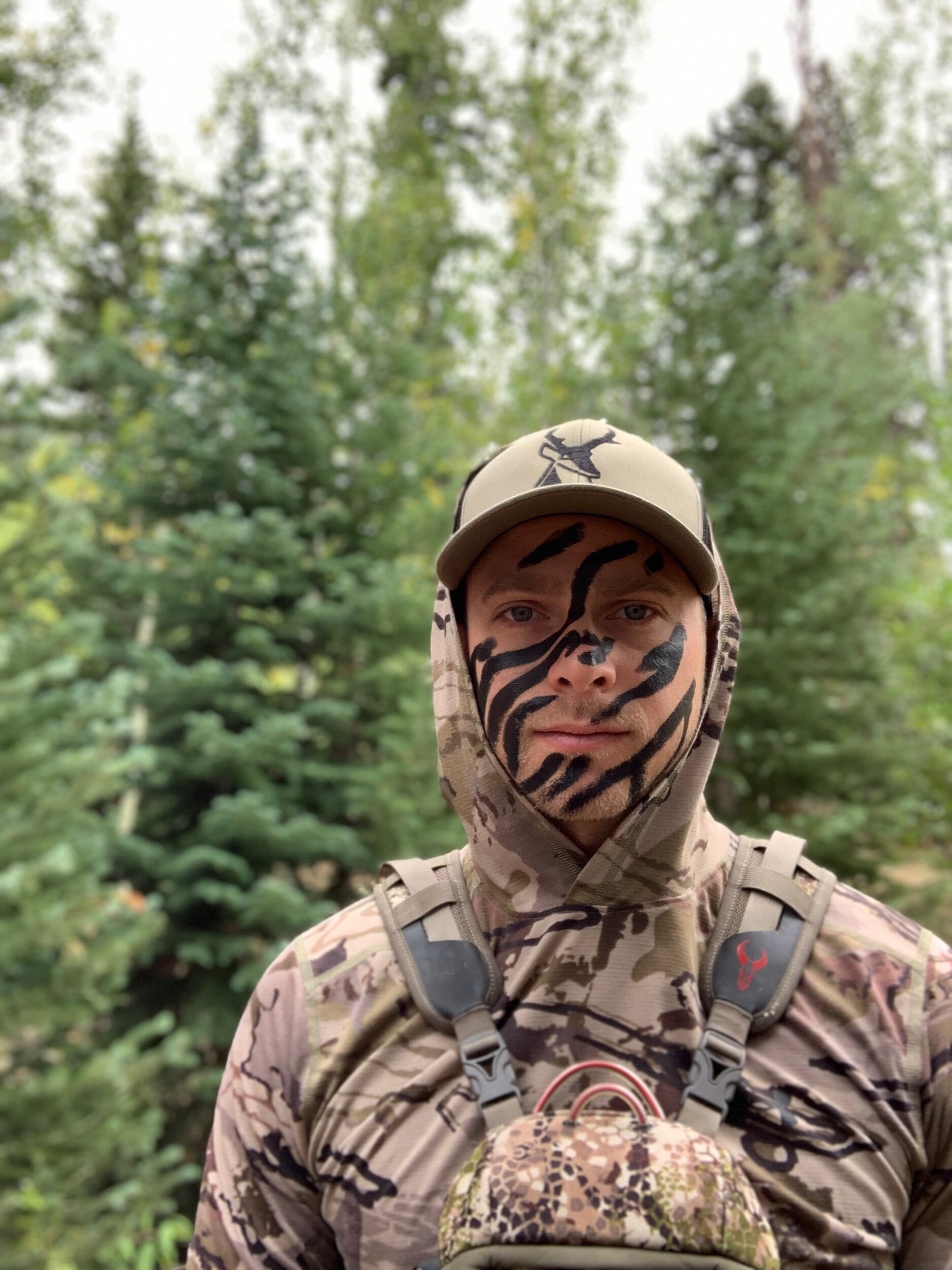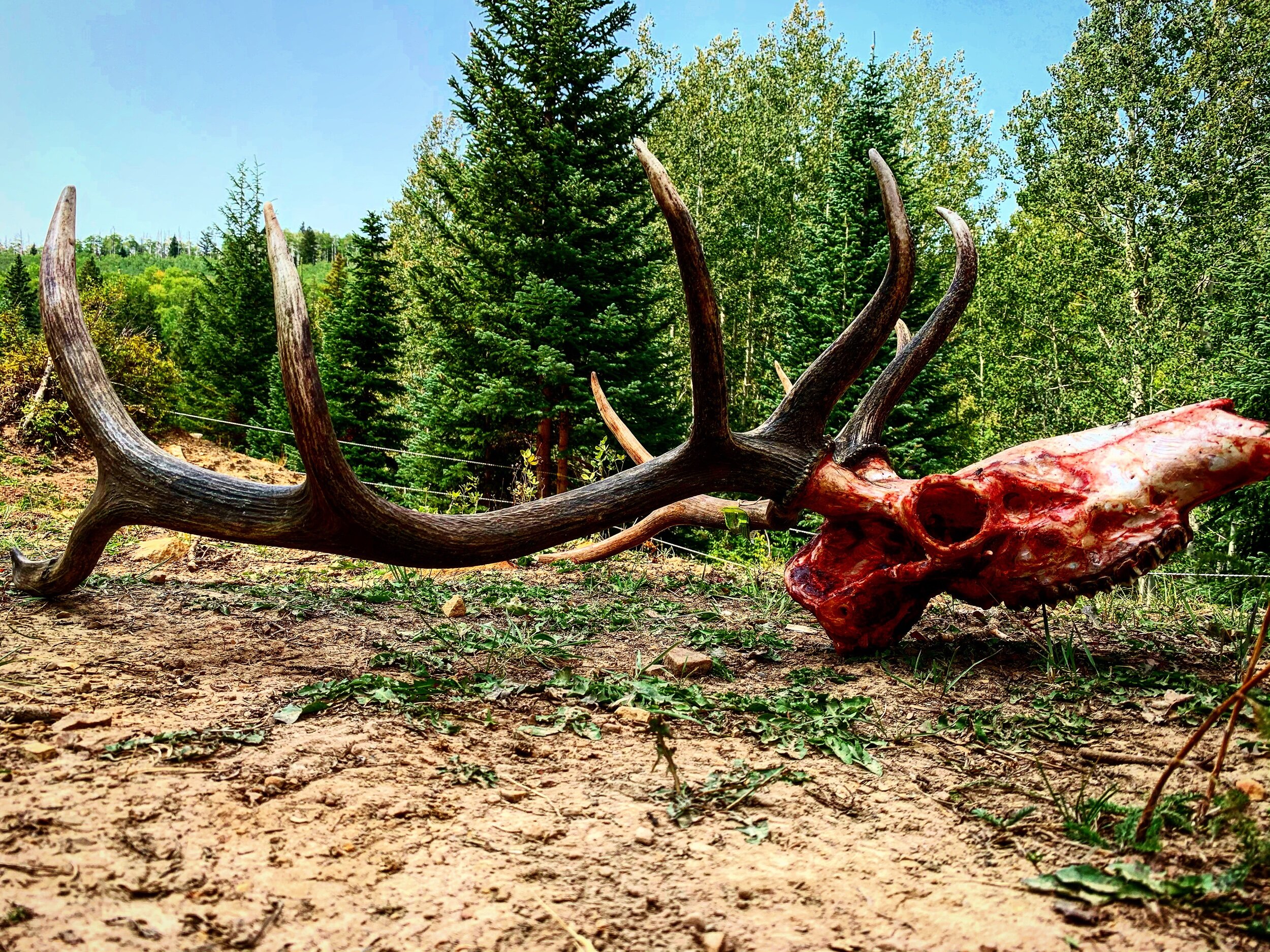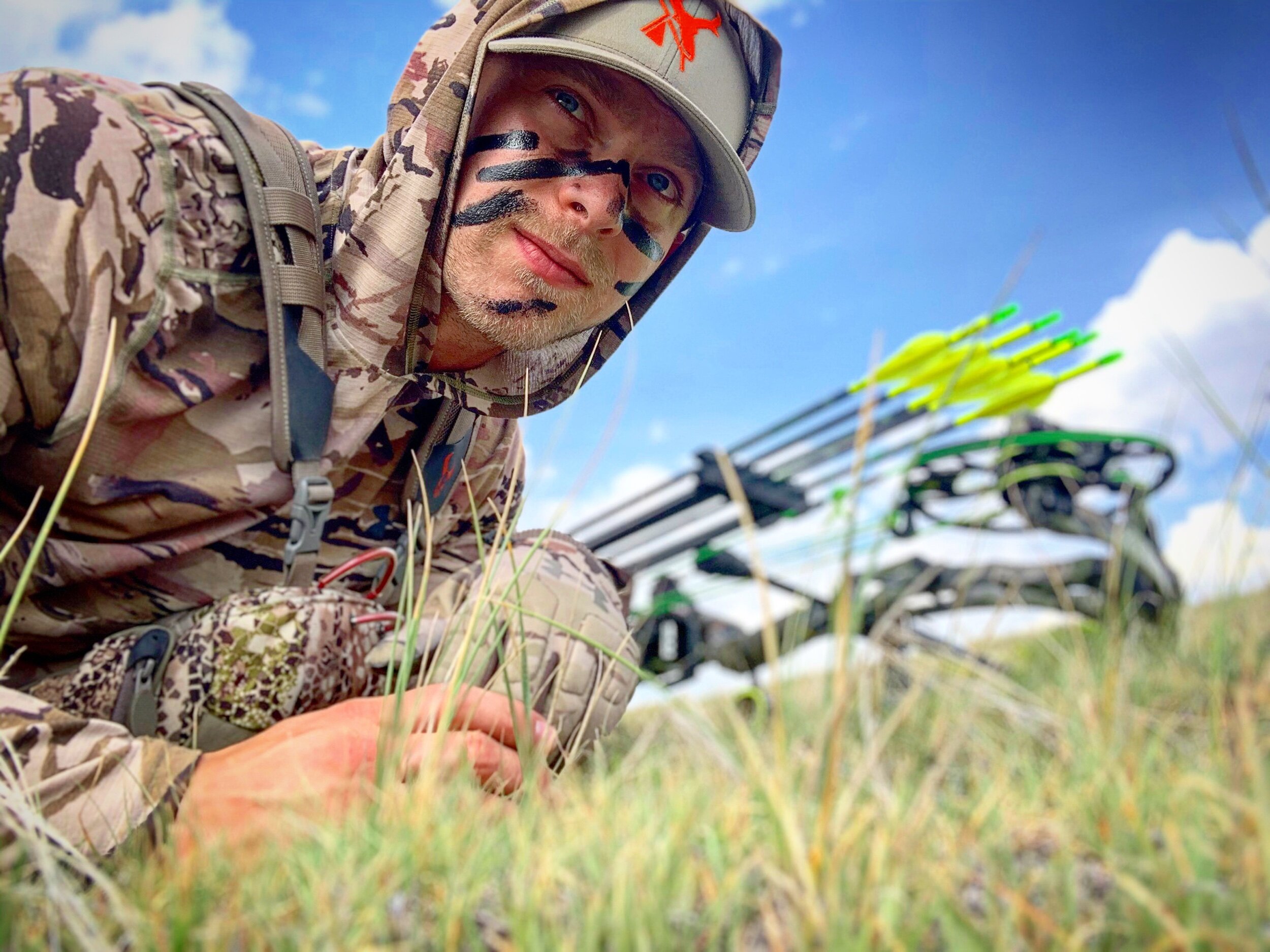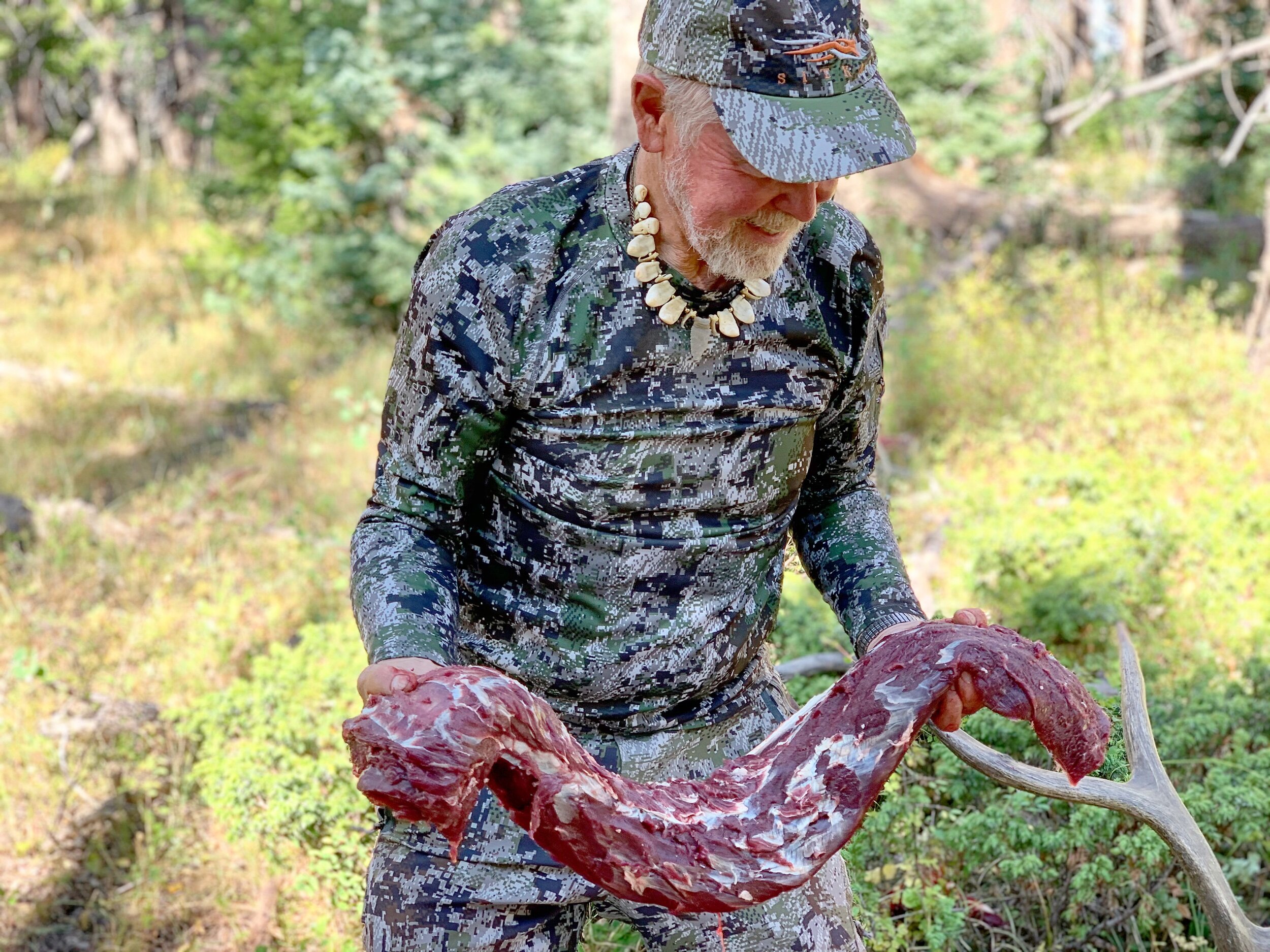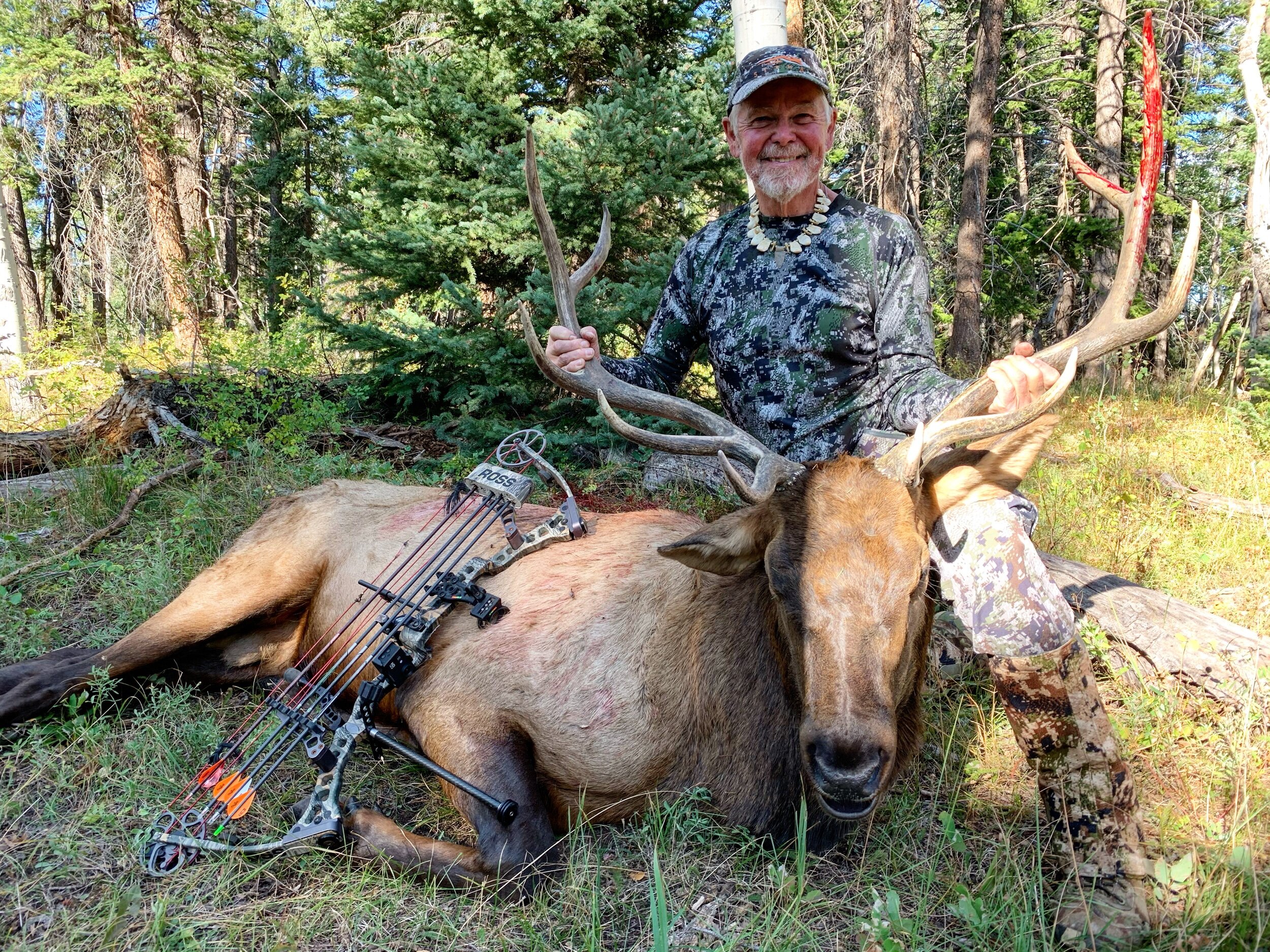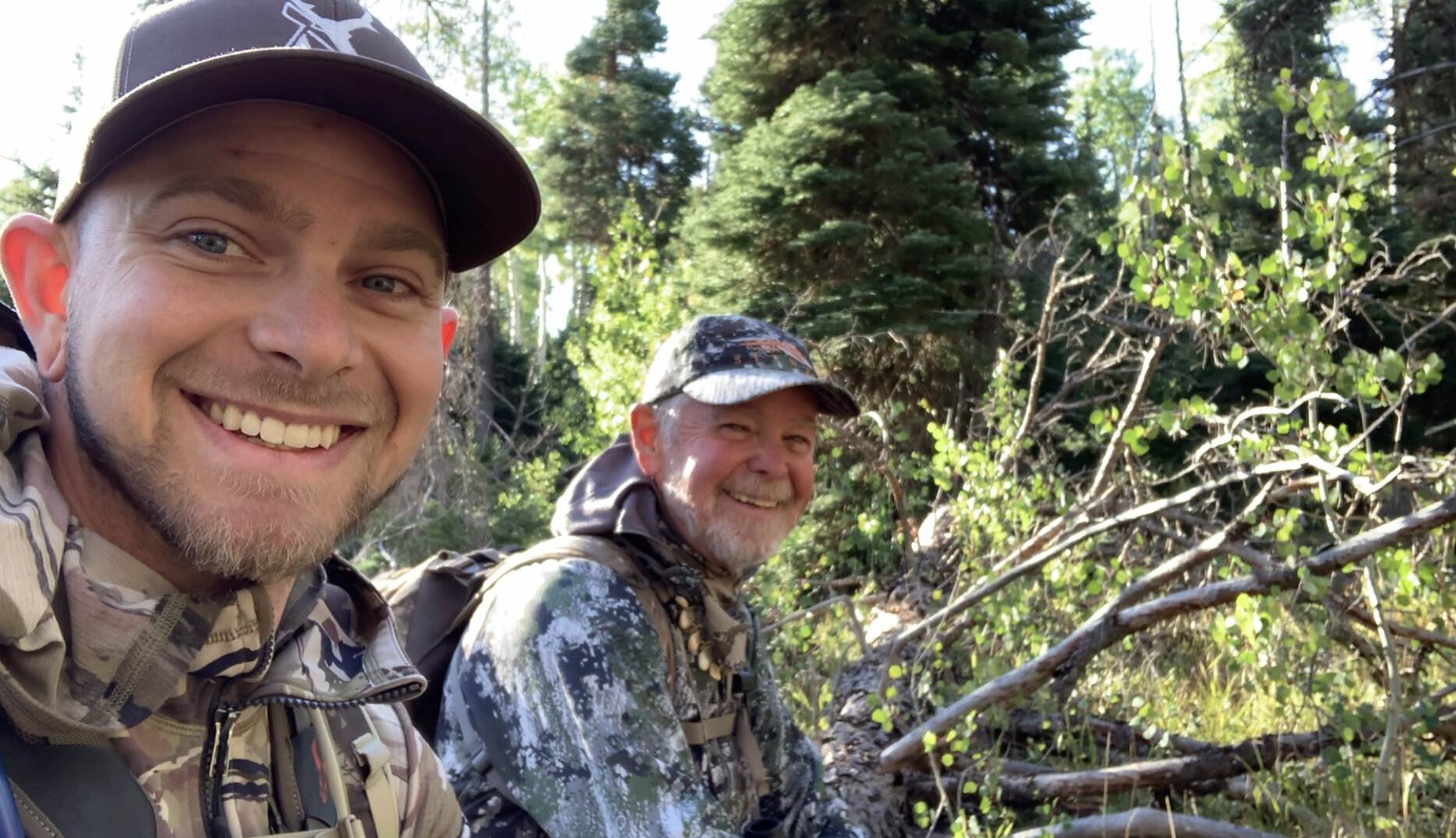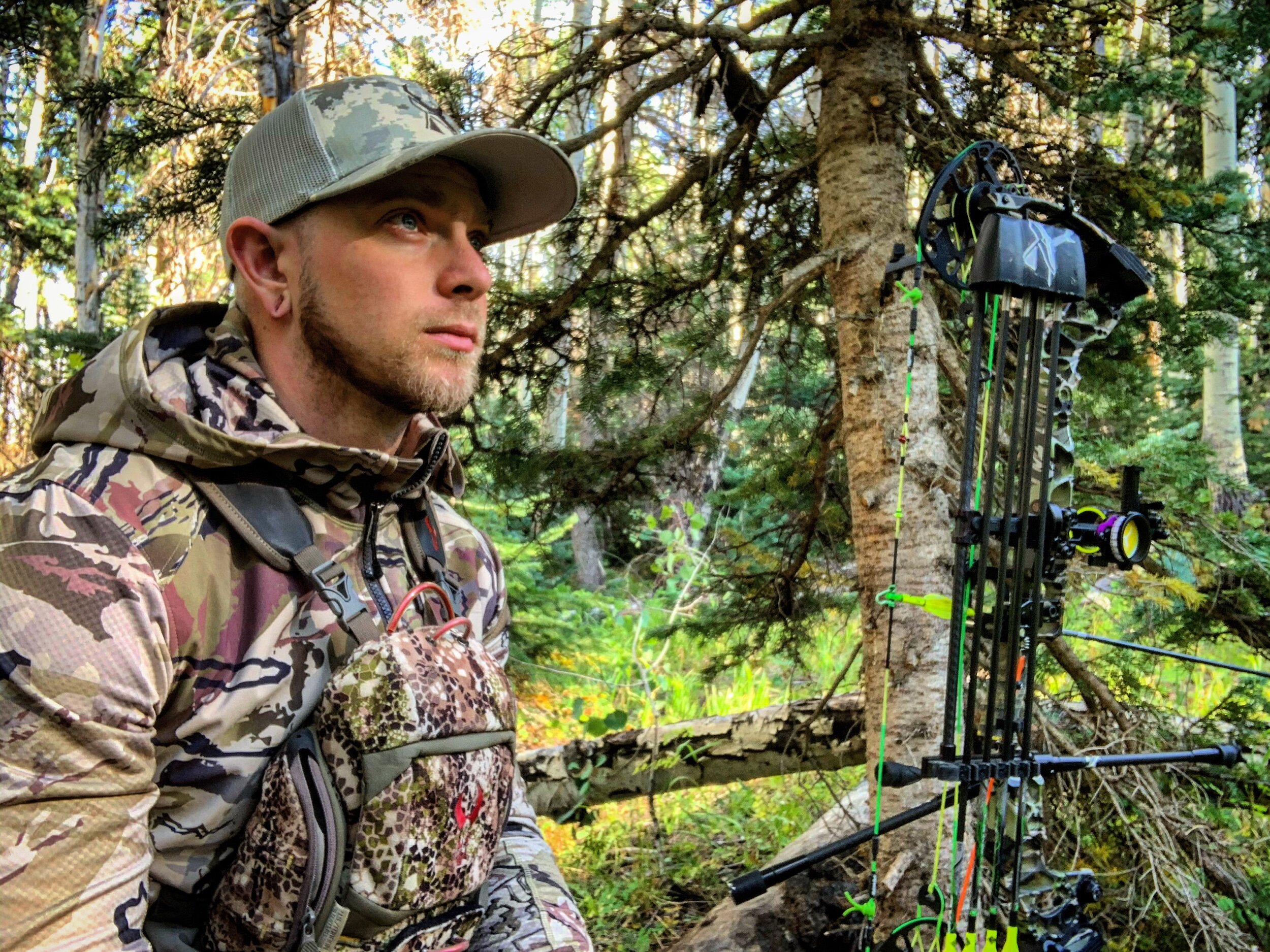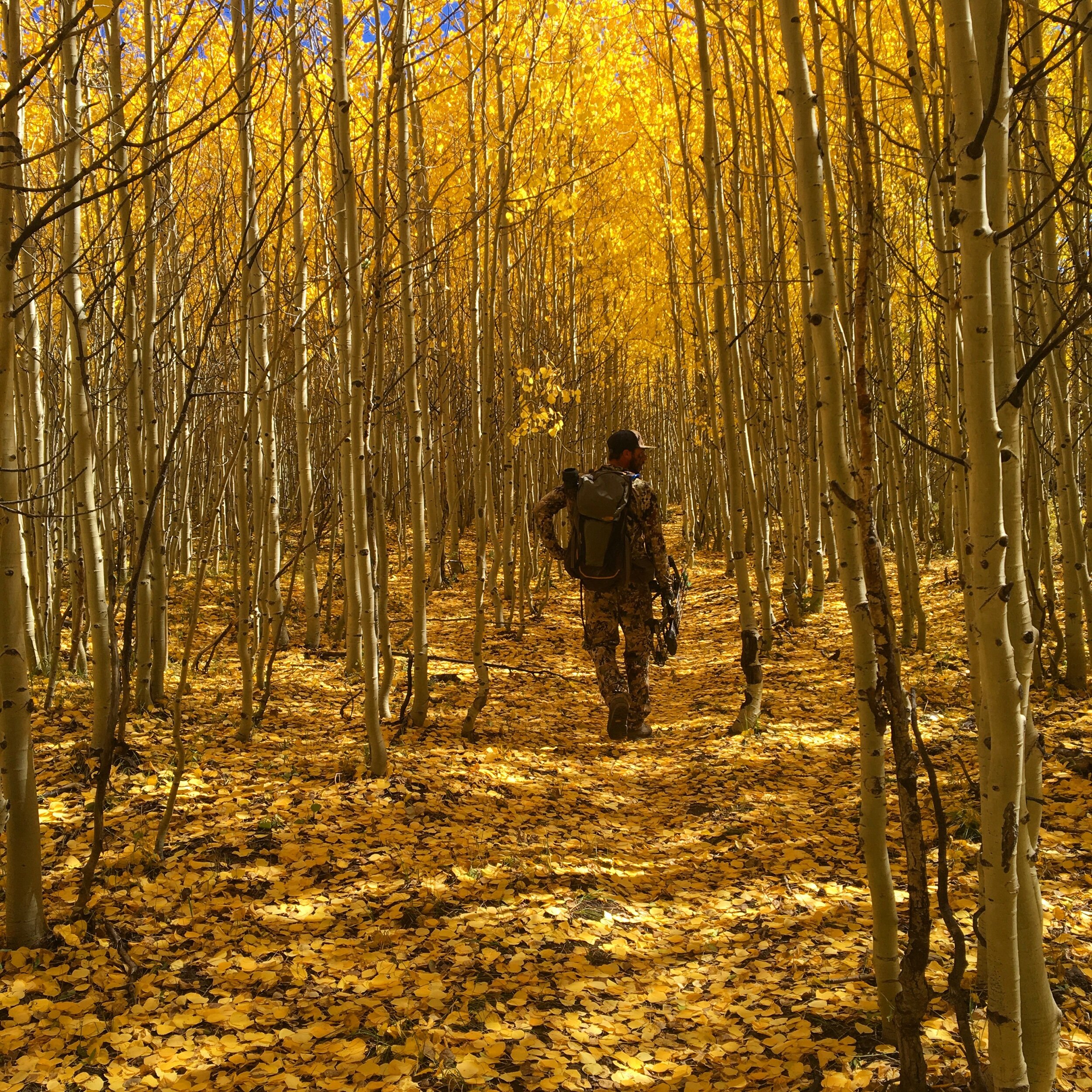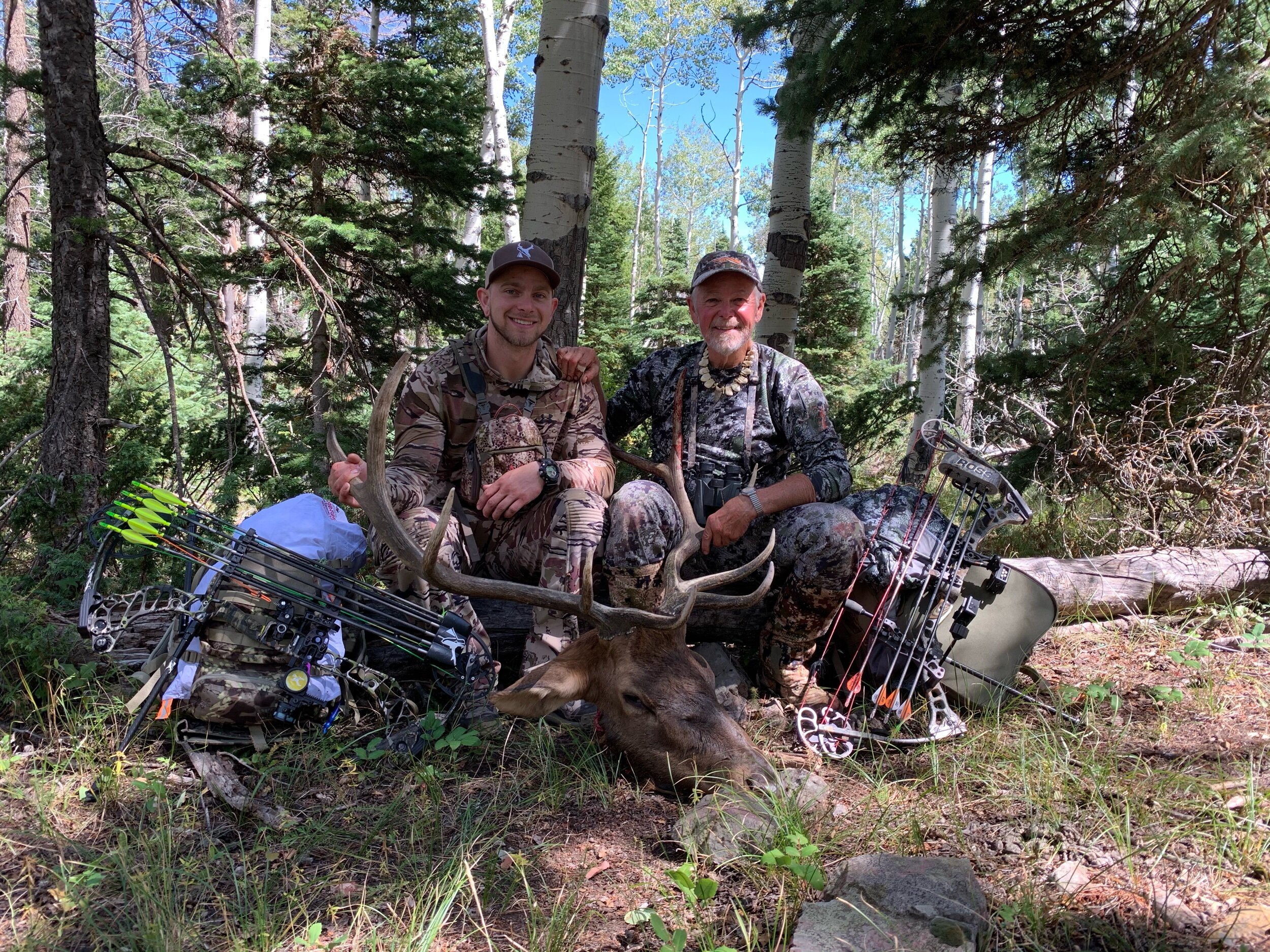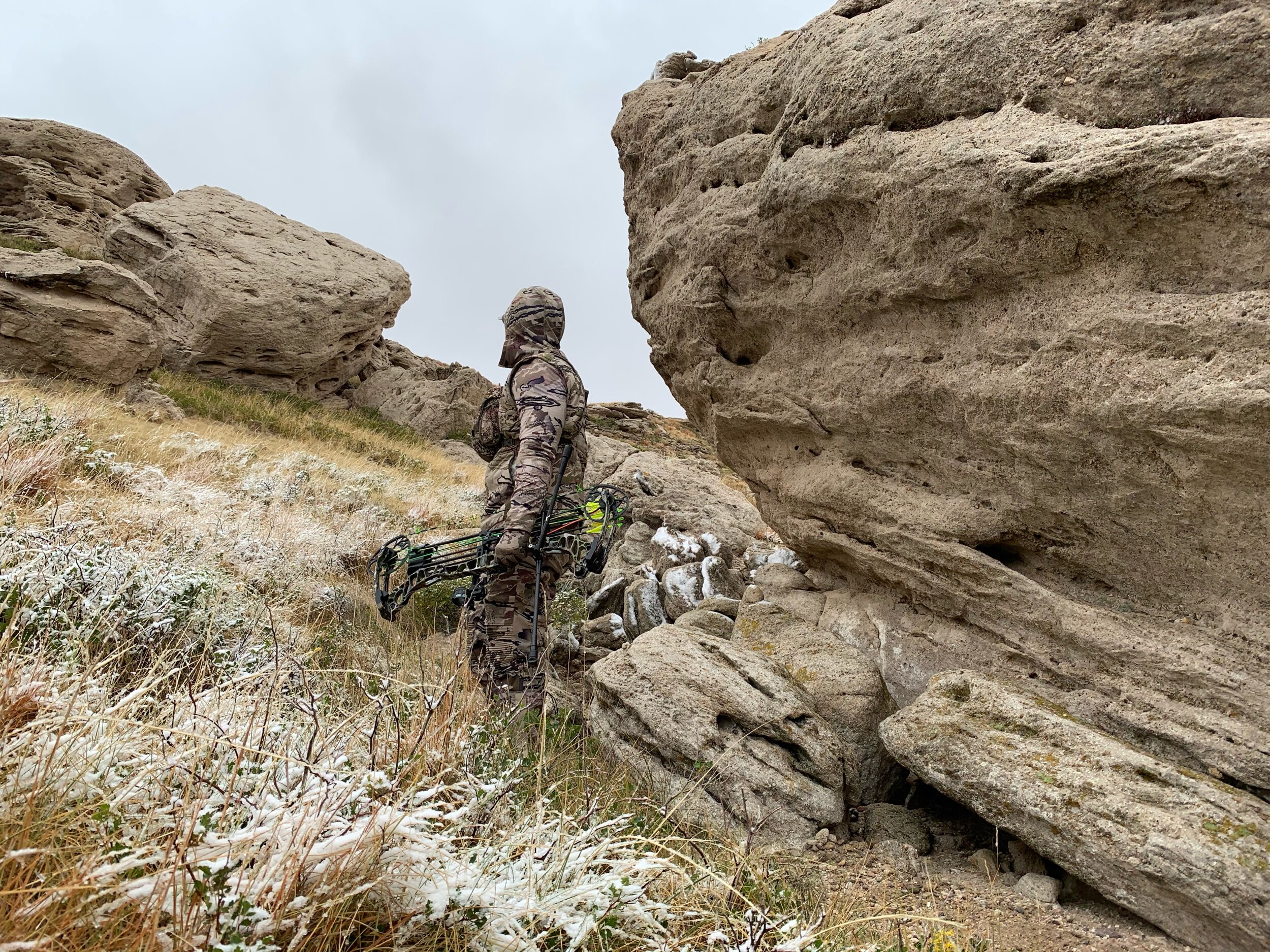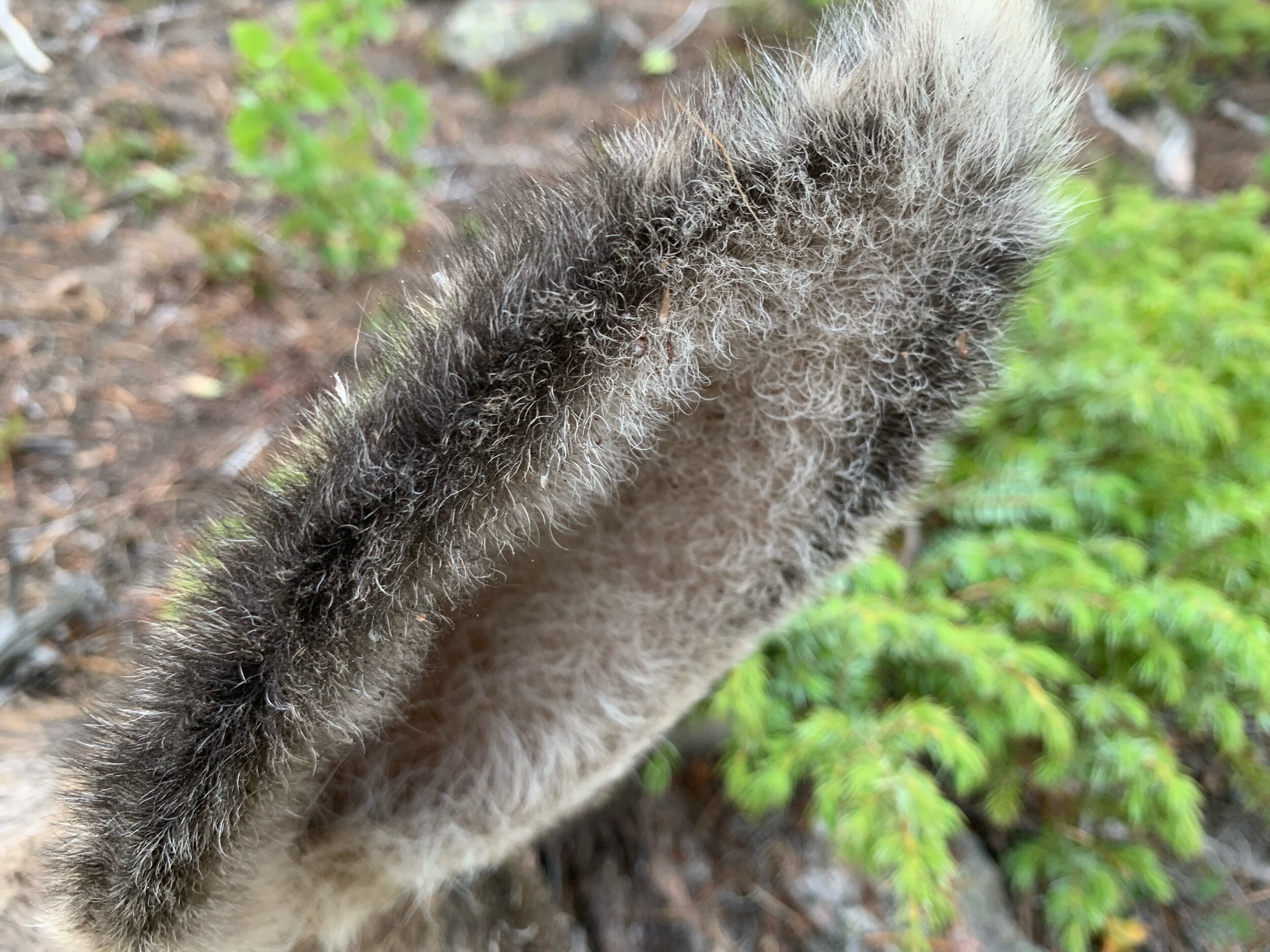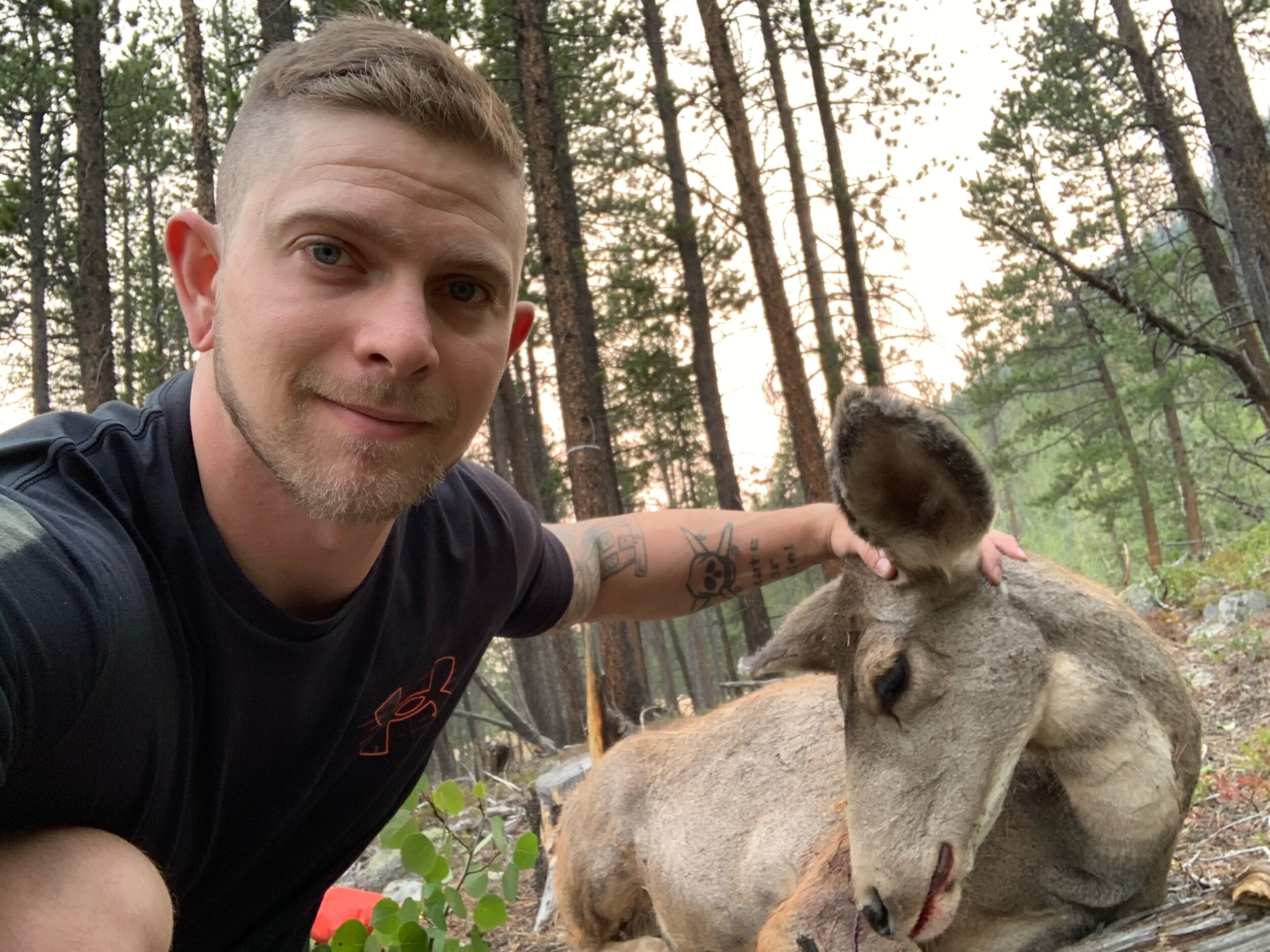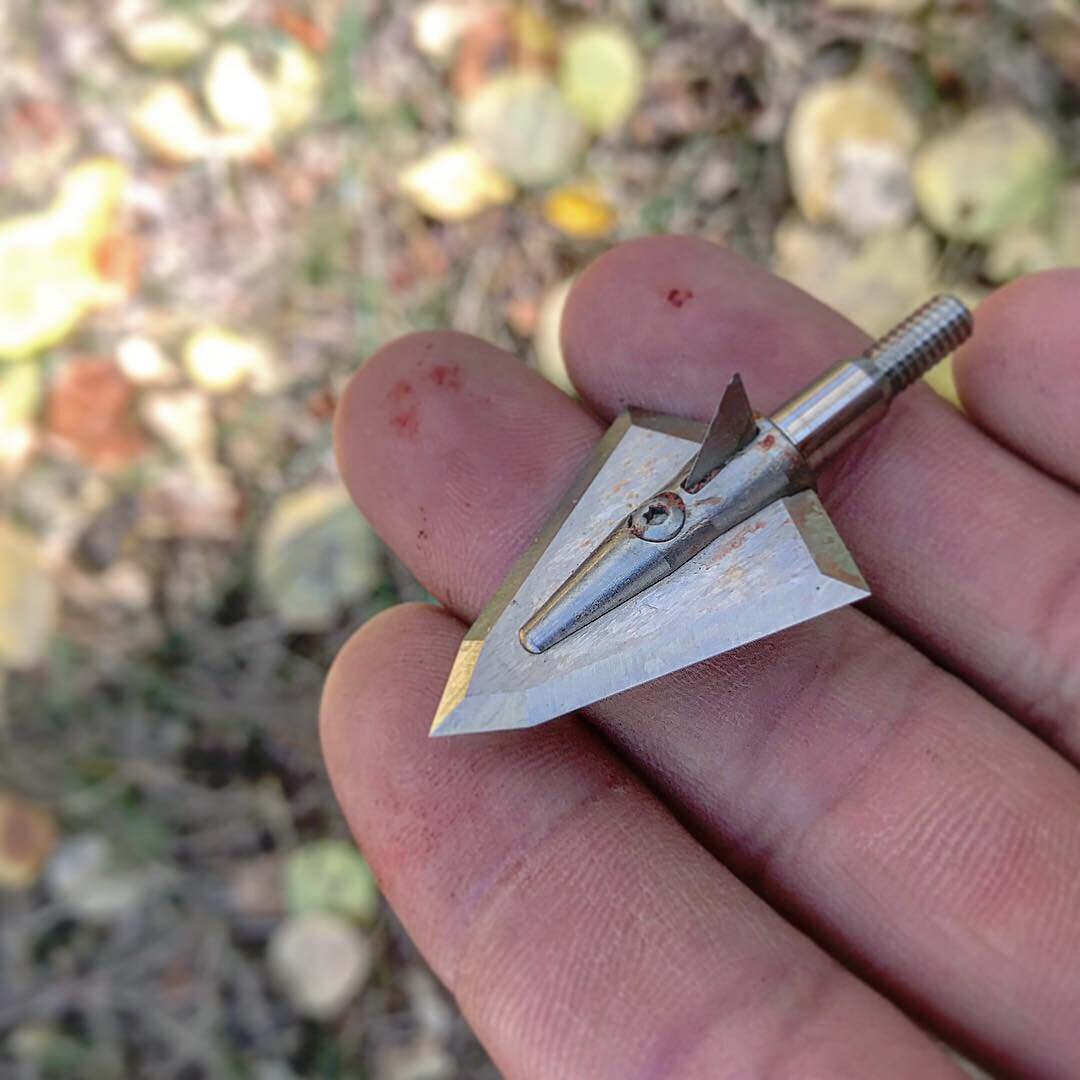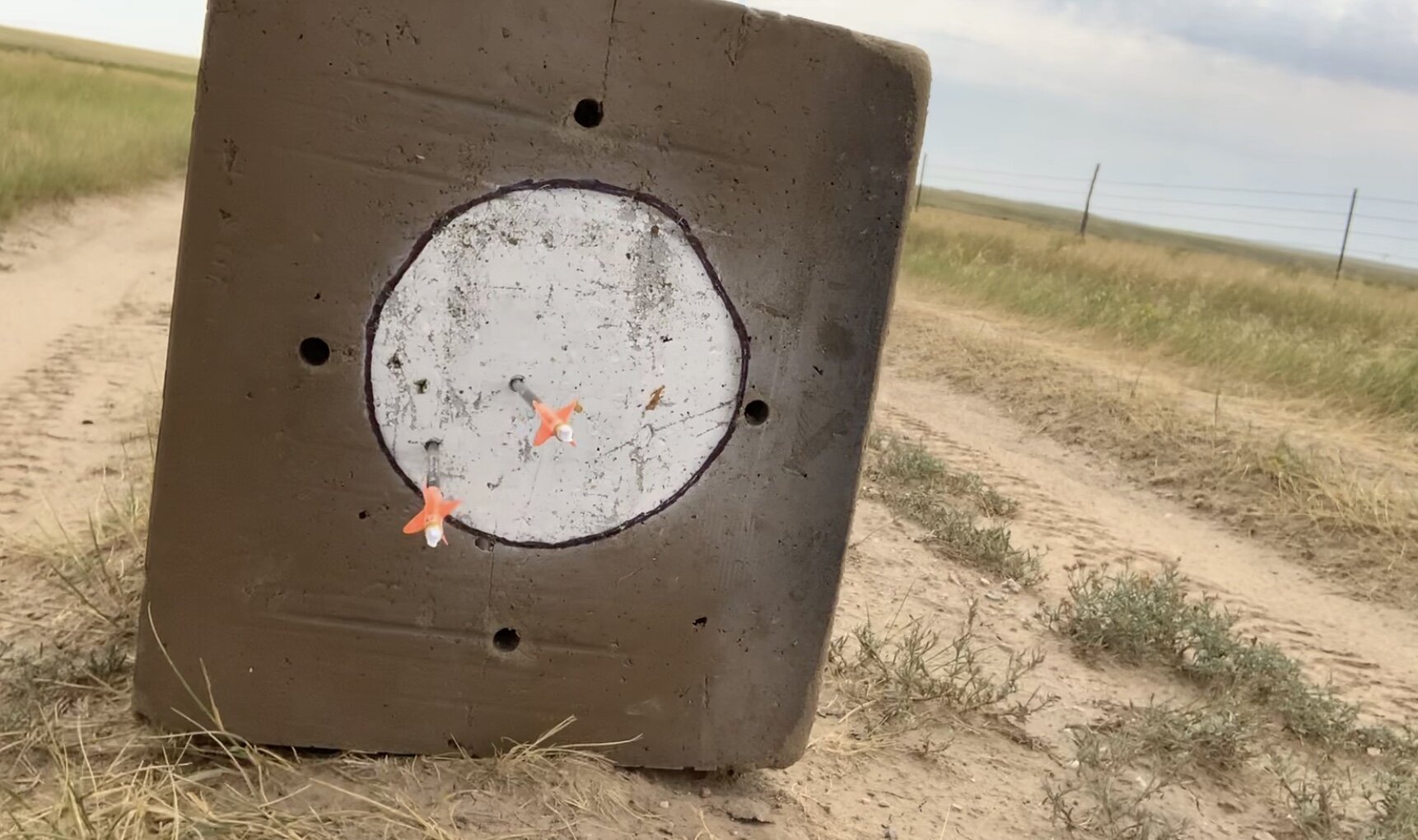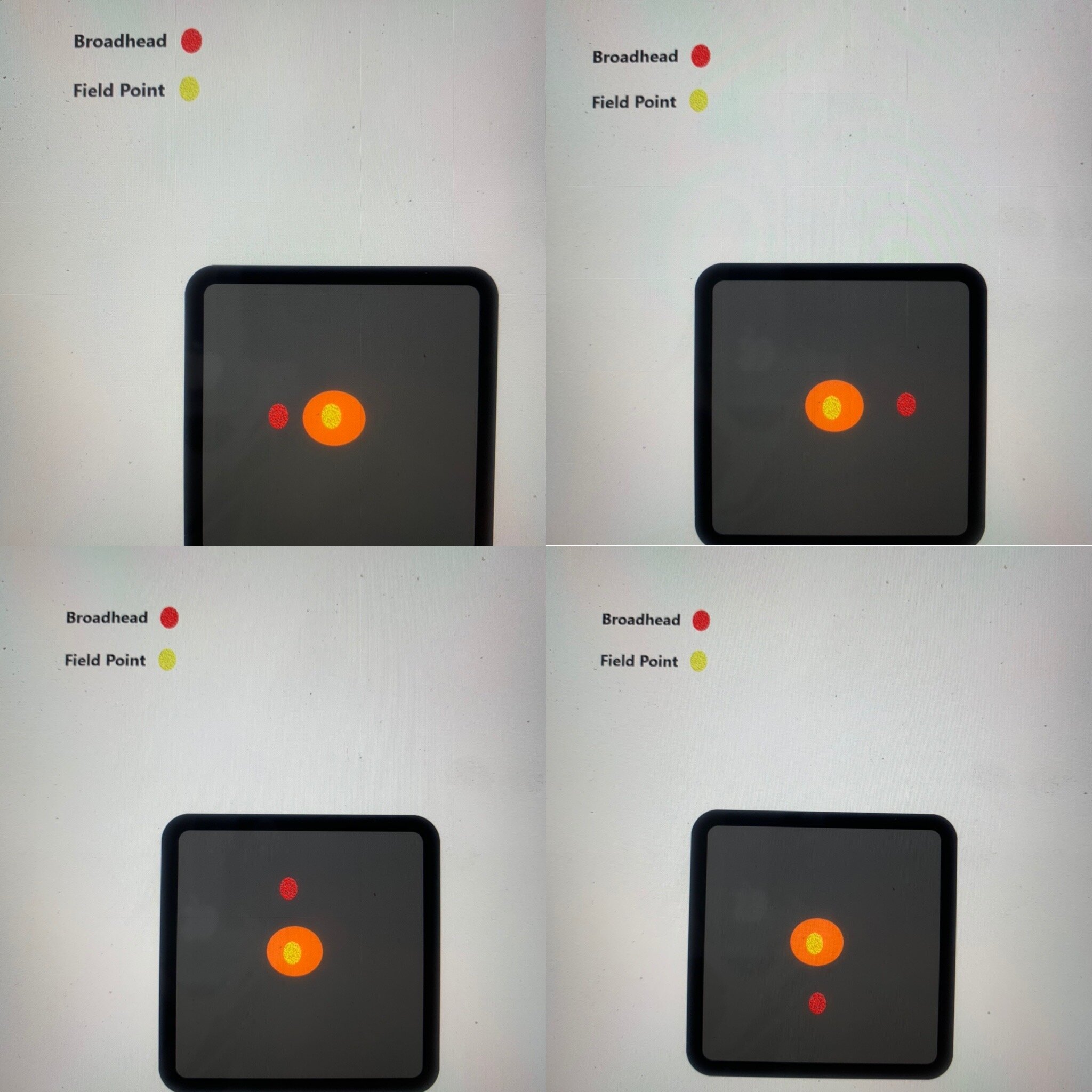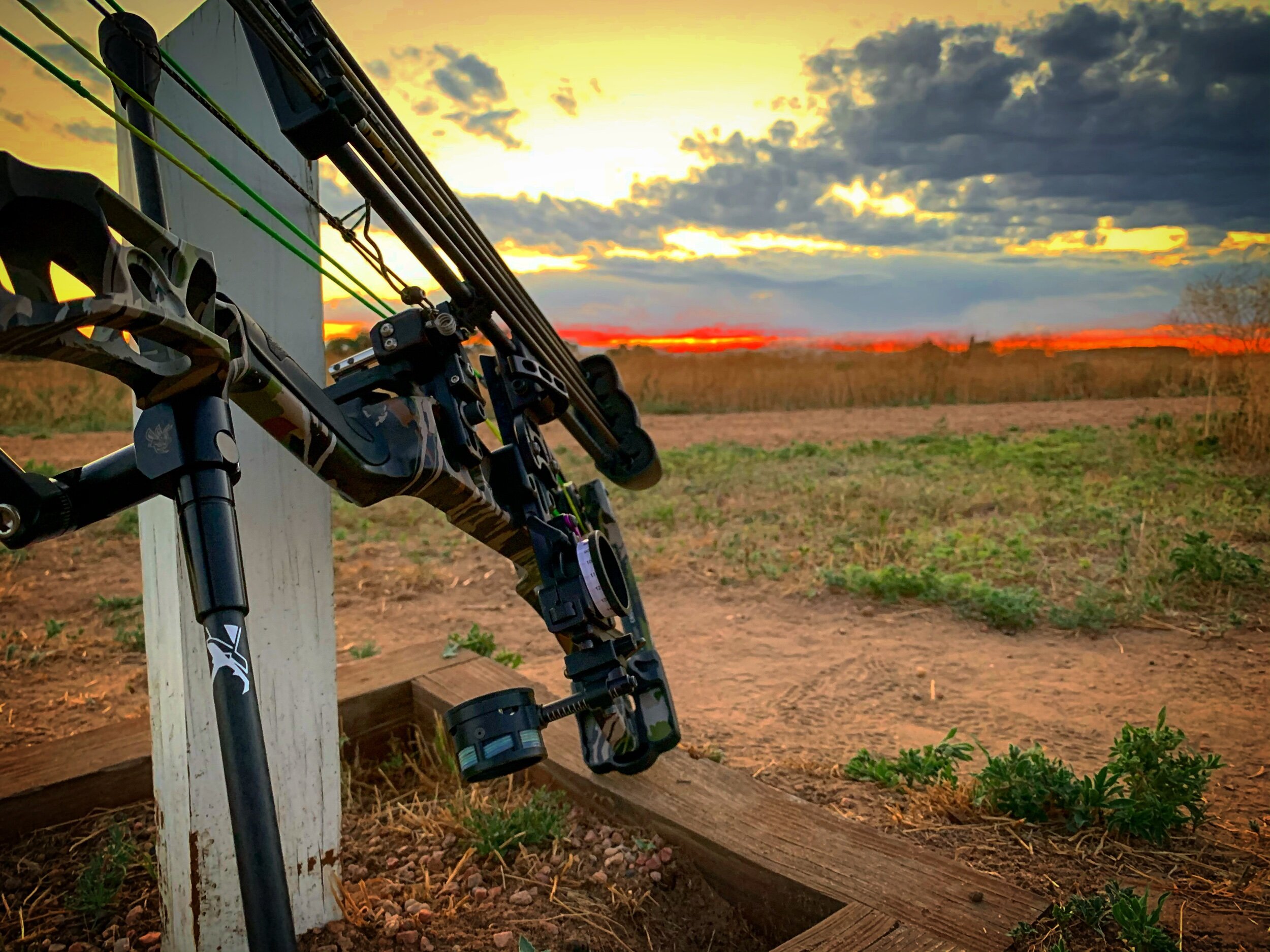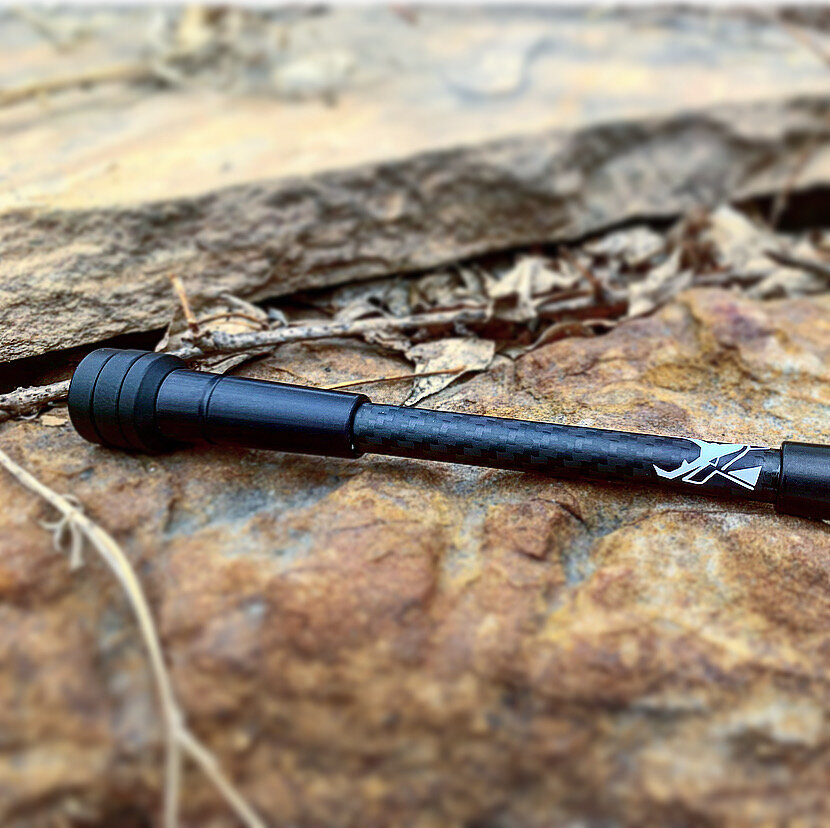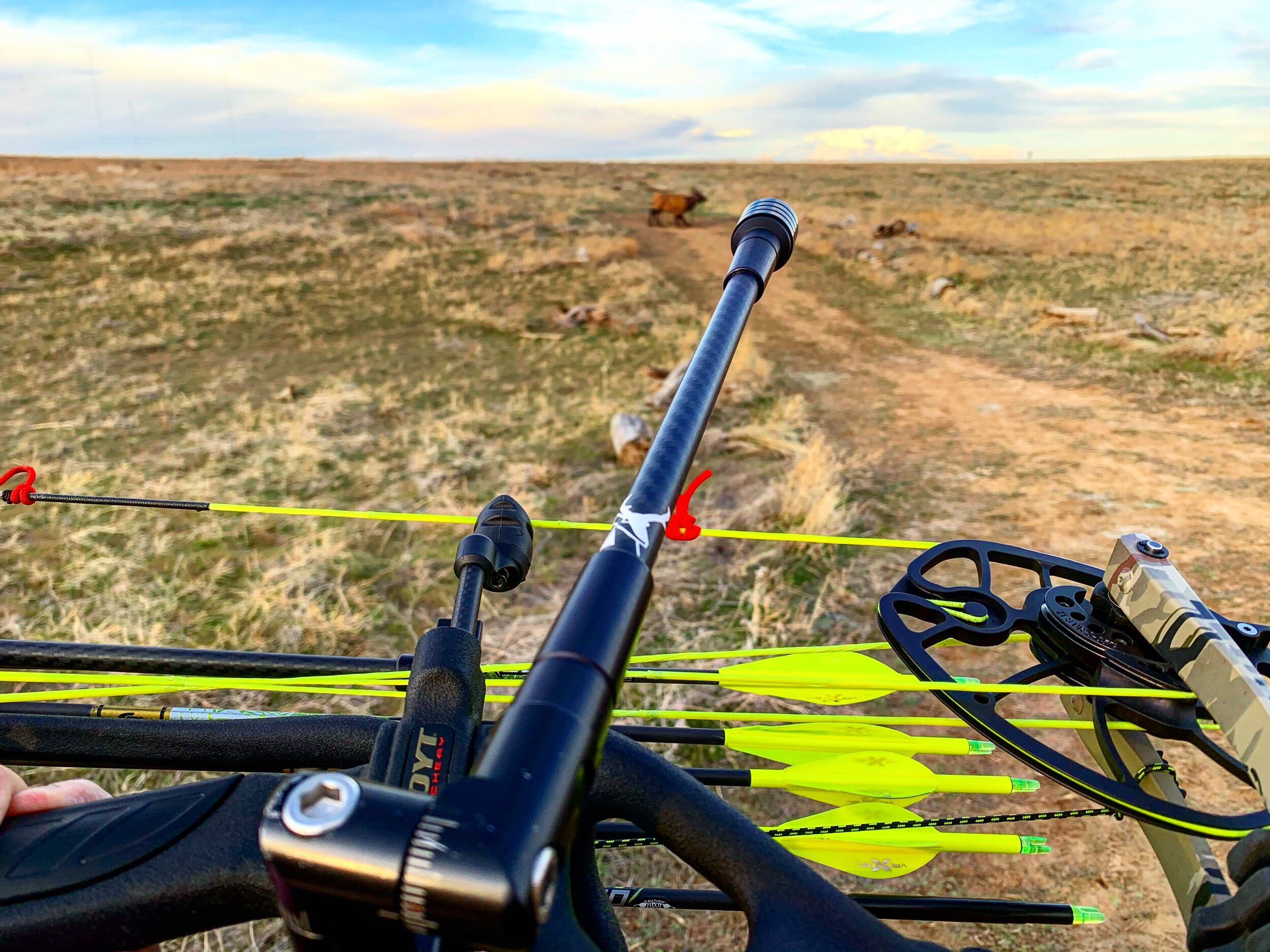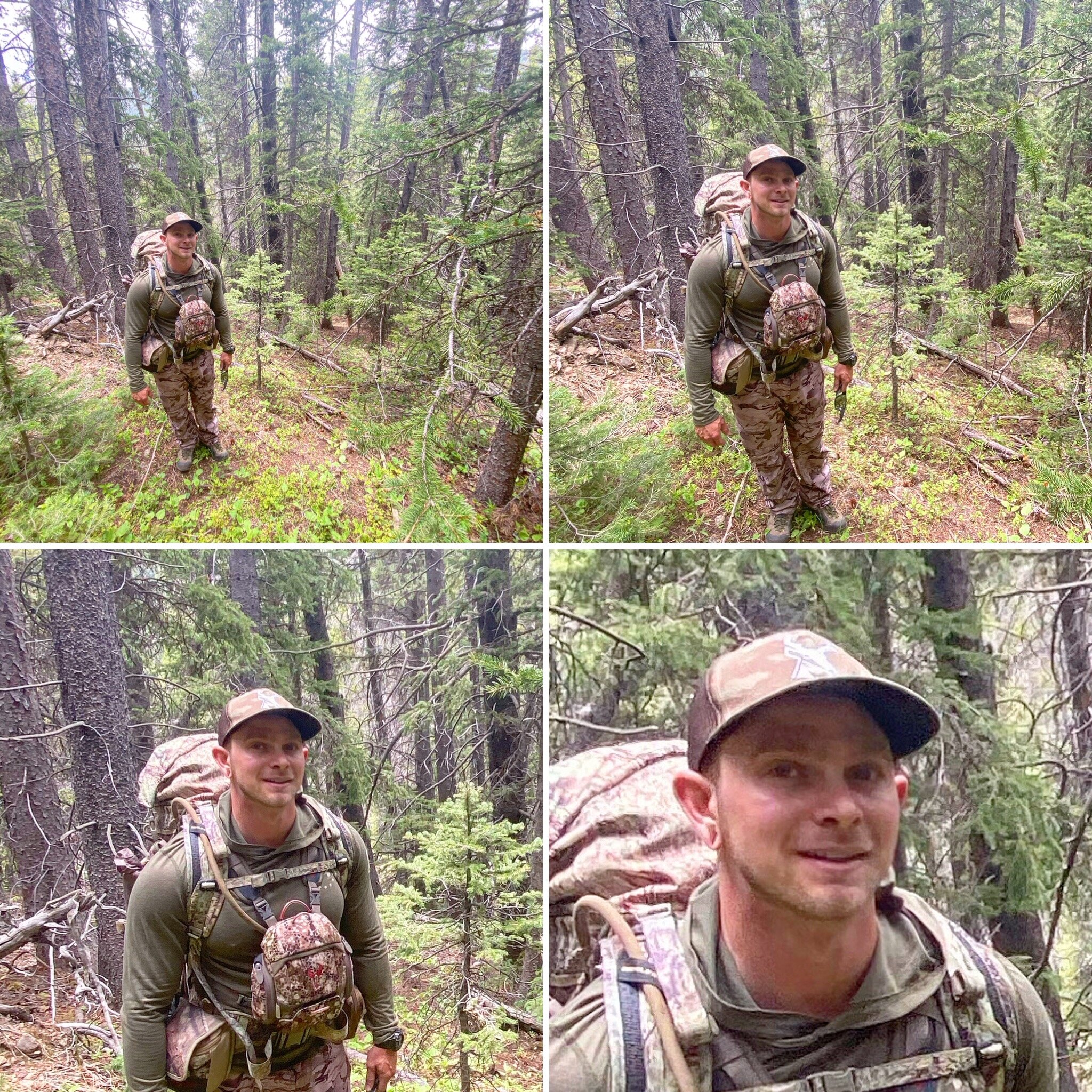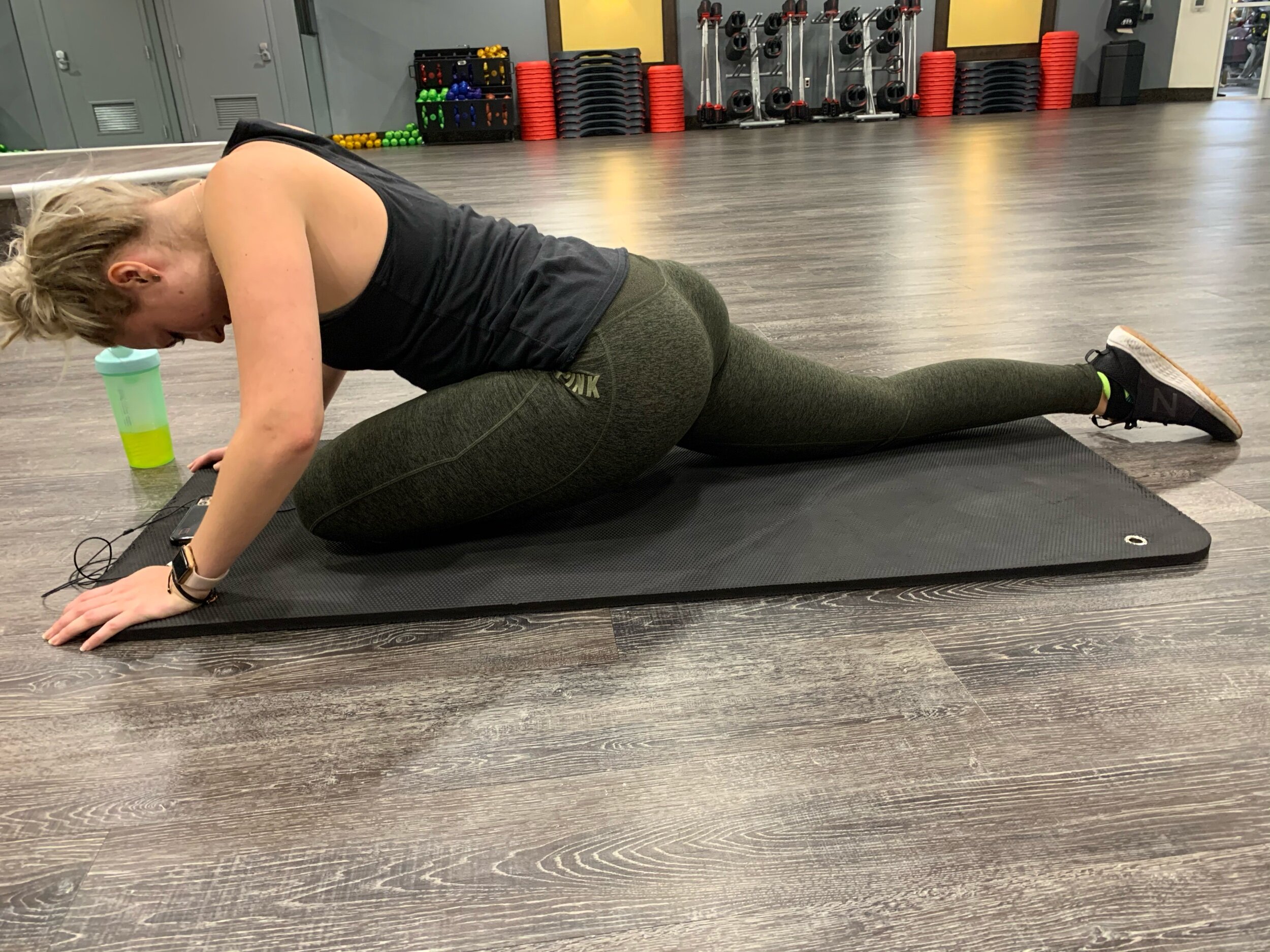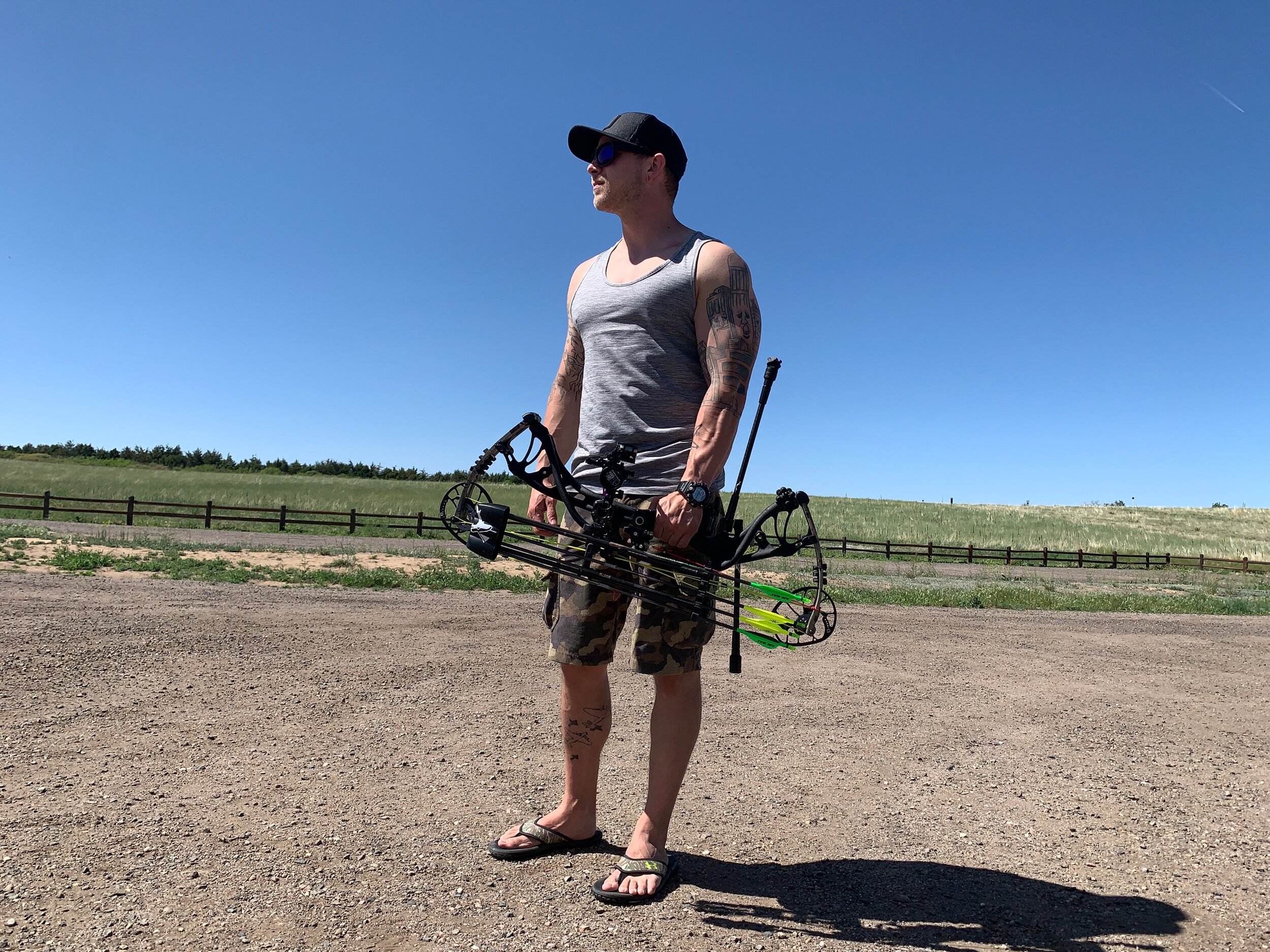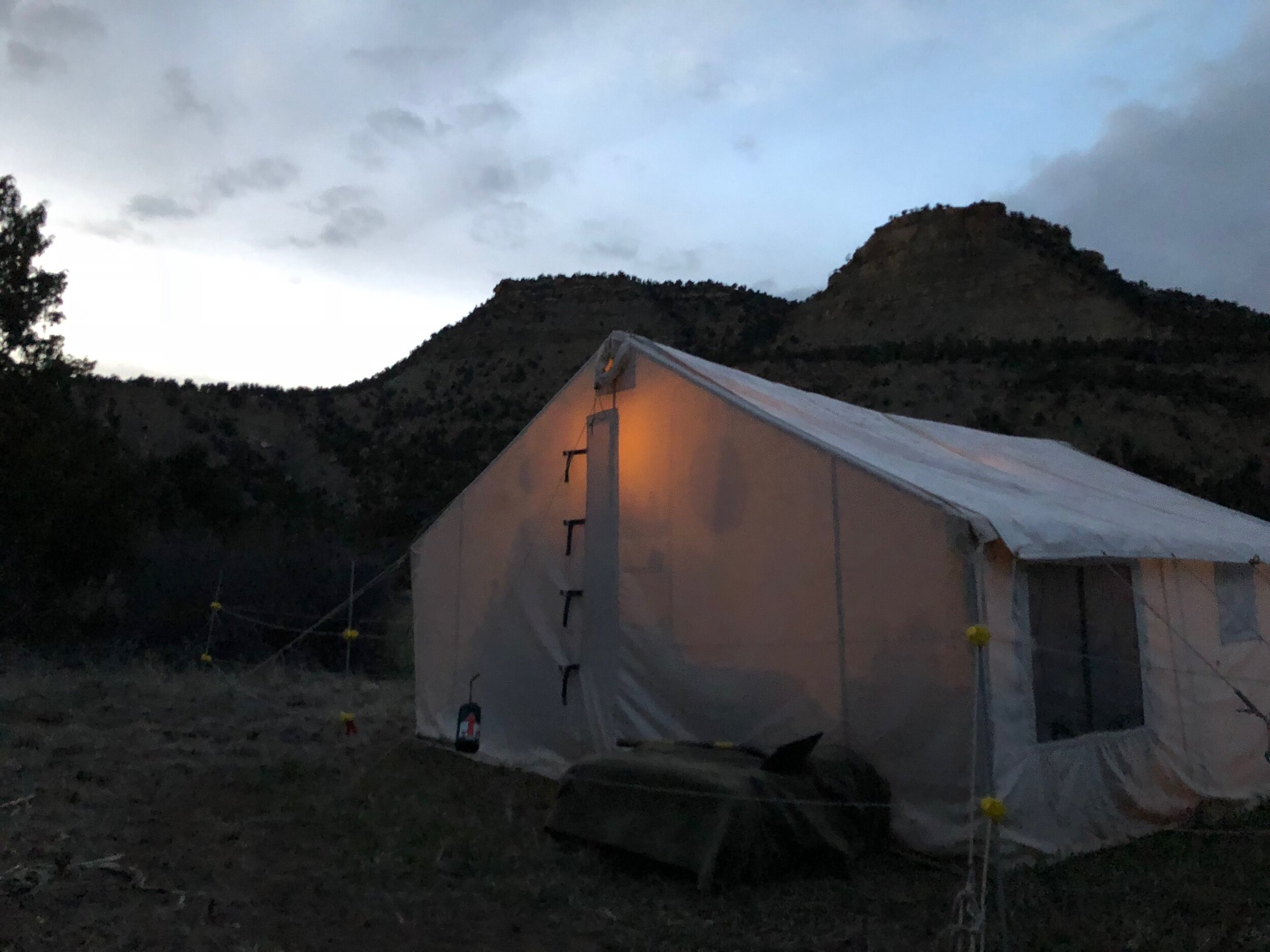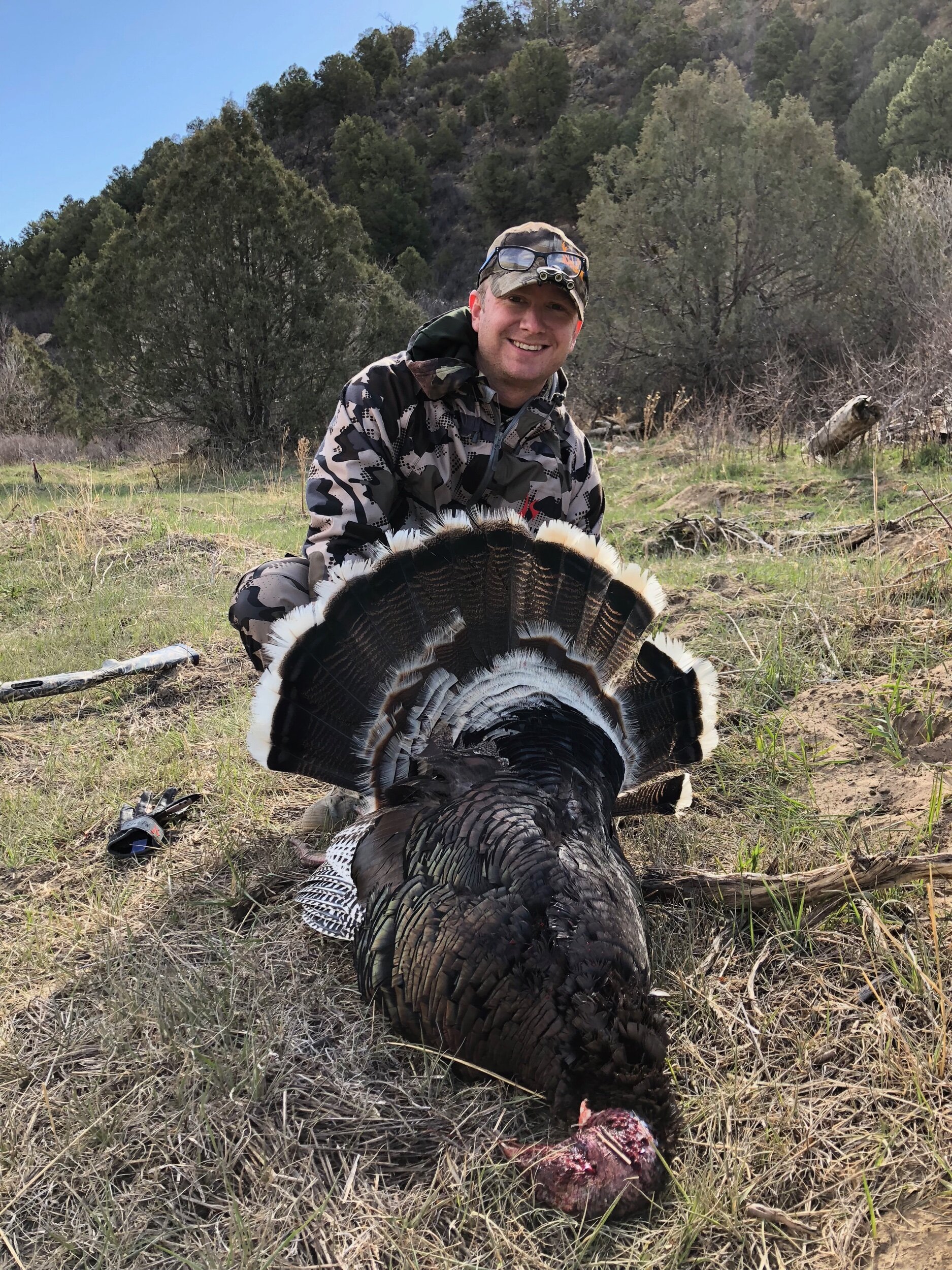Sometimes the hunt unfolds fast, with a moment’s notice the story unfolds and a tag is notched. I have had a couple of those, the feeling of achievement and success floods over you in such a whirlwind that you are left feeling beside yourself. “Did that seriously just happen?!” One year I shot a mule deer doe 5 minutes after pulling up to the trailhead on the first evening. The goal of this article is not to belittle or devalue that hunt, but this is not that story. My 2023 Nebraska whitetail tag took a whole hell of a lot more time and patience than that and by the time the dust, or snow rather, had settled, I had notched my tag on what could quite possibly be the largest deer I will ever shoot. Enjoy.
October 28th 2023 came with icy eastbound freeways, blowing snow, and a father and son bound for a whitetail hunt in Nebraska. For the first time, it was the son who was more experienced hunting this particular animal. Over the last seven or so years I have become thoroughly obsessed with hunting whitetail deer. My father has only hunted them briefly once before, many years ago. As you may know from reading previous articles, my father and I have hunted elk together for the last two decades. He taught me all of the basics of bowhunting and instilled the love for this lifestyle deep within my heart and soul. Now it was my turn to give some back.
After a long and nerve wracking drive going about forty miles an hour the entire way to the farm, we arrived, unpacked our bags and got ready for the evening hunt. The snow had not quite made it all the way east yet but the frigid north wind told us it was not far off. As we got dressed, I cautioned dad to wear all of his layers. “There is no hiking to warm up, we just sit in the cold.” He reassured me that he would be fine. He was in fact not fine and after only 90 minutes in the tree he was visibly freezing and shivering. So about 45 minutes before sunset we climbed down and headed back to the house to warm up. Needless to say, he learned just how cold a guy can get sitting in a tree with the wind ripping in your face.
The following morning we headed out to another property that had a few good deer on camera. This year I made a deal with myself, I was only going to shoot one of the four shooters we had on camera and nothing else. Two of the shooters had vanished, one we only had a single picture of, and the fourth was one we called the big 8. I gave dad the green light to shoot whatever he felt like since this would be his only trip out.
The snow had arrived overnight and a gentle breeze carried the flakes down through the early morning darkness. After getting dad to his ladder stand, I made my way to a tree I had picked out on the map to hang my saddle. This was my first season using the saddle and also my first ever hang and hunt with it. As I got to the tree and began to unload my sticks I realized something I had not quite planned for: the tree was too big for the strap of my stick to reach around. Fifteen minutes until first light had me panicking, I scrambled to find a tree, any tree. I found one about 50 yards to the south and got my stick up and ascended to the top of it, only to look up and see a giant tangle of branches was preventing me from going any higher. What. A. Nightmare. I was livid, almost didn’t even bother bringing my bow up the tree, but I did, for “practice”. I was five feet off the ground as the light began to replace the darkness. Surely I would see nothing, or worse, blow out one of the shooters on the first day. It was quite the opposite as I saw probably fifteen deer, including the big 8. He chased a doe to 20 yards and stood there for about a minute. That damn tangle of branches that prevented me from climbing was blocking my shot, so I was forced to simply watch him. Dad had him at 35 yards earlier as he moved north to south but couldn’t get a shot as the buck was moving through the creek bottom too fast. As noon approached, we climbed down and met at the truck. Dad’s first morning was awesome! The property we were hunting has a stretch of timber about 600 yards long and 50-100 yards wide, so when two people hunt it, you usually see the same deer, which we did.
The rest of the trip was rather uneventful as the snow stopped and the temperatures climbed into the high 50s. Dad enjoyed his time and so did I. Although not tags were filled, our hearts were. The time spent together on a new hunt was something we both enjoyed.
The next trip out was mine alone, and I was pumped! Peak rut week in south central Nebraska is usually the week before rifle season and bleeds into that week. A short cold front was in the forecast, and I was filled with anticipation. A couple of encounters with small bucks and does dulled that excitement and I drove back home empty handed again.
Thanksgiving week brought me back, this time with Brandon. I got there a night early and quickly rushed out to sit. My second encounter with the big 8 took place about an hour before dark. A doe worked north to south along the outer edge of the creek bottom, the far side that I was not on. The big 8 followed her intently. I grunted, snort wheezed, rattled, begged and pleaded to no avail. I had to settle for a sighting and no shot opportunity. The rest of the week was quite slow despite a cold front and some snow. Friday after thanksgiving was a cold, calm snowy day, neither of us saw a single deer. Again, I went home with nothing but some new memories.
My next trip out was by far the worst for deer sightings. The first week of December I sat for two entire days and didn’t see a single deer. I decided that my season was probably over with the holidays coming up and work piling up at home. I remember it very clearly, I was going through my hunting gear, putting things away, December 20th. I thought to myself, “the season is still open, why the hell are you not hunting?!” With three days left in the year (and season) I returned, one last hoorah, it would be now or never.
The morning of December 29th was cold, dead calm, and exciting. A fresh blanked of snow had fallen and now covers the sleeping creek bottom as I sit in my saddle anxiously awaiting daybreak. The first sit back after time at home always gets my blood pumping. Light broke and with it came a pile of deer. A group of does approached my tree from behind me, sitting in the saddle, it was tough to get turned around completely to see them, but eventually they hit my wind and bounded away, crunching the snow as they retreated. Next came a second group of does, this time from the north, they worked in down the two track road directly below my tree and one presented a hard quartering away shot at 18 yards. I remember just how nervous those deer were late season, any move or noise and they were on you. I drew back using the cover of the tree and settled the pin just in front of her hind leg. The shot broke and I immediately knew it wasn’t good. I see a lot of arrow sticking out from way too far back. I had center punched her hind leg bone. After an hour I got down to follow blood, only to find there was literally none. For 500 yards I followed tracks, found my arrow, only 4” of blood on it, and no deer. I returned to my tree at around 9:45am to climb up and grab my stuff to head in for lunch. I left my bow on the ground since I was leaving. No sooner than I get up my sticks, I catch movement to my north. Another two does are coming in. They come in to the literal base of my tree, smell my bow, smell my bottom stick, and then move on. It was pretty comical, but in the long run, one less deer blown out is a win.
After a quick lunch I returned to the tree at 12pm to sit the rest of the evening. The snow had melted a bit since the morning sit and it had warmed into the high 40s now, my favorite temperature to be in a tree. I sat for a couple hours as the woods calmed from my arrival like they usually need to. Around 4pm a couple does showed up and walked the same trail as the ones from the morning did. I was still a bit shaken from my poor shot that morning so I decided to pass. As darkness came closer and the light had about a half hour remaining before night closed in, a small buck approached from the south, walking a trail through the bottom that would lead him to the base of my tree. I made that deal with myself earlier in the season, so this little guy was safe as he worked down that trail all the way to five yards before catching me taking his picture and returning the way he came. About five minutes later, another deer came trotting across the CRP from the west, dropped into the bottom, and got on that same trail. I thought it surely was that small buck again. As he got to about fifty yards I quickly realized it was not the little buck, it was the big 8!! I had two things going for me, my bow was already in my hand ready to go, and I was positioned in my saddle perfectly for a shot since the small buck came in the same way. Some things get etched into your memory forever, the sight of his bleached antlers coming down that trail is one of them for me. There was a tree about five yards down the trail from me, he split off the trail there. As his head went behind the trunk I drew, he stopped quartering away at 13 yards my pin buried and the arrow went. I knew the shot was perfect, but after the lost deer that morning I was still nervous. I watched him run off and disappear over a rise in the CRP to the west. This is about the time that I came unglued, 40 sits, five trips, 3,000 miles on my truck, it all came down to a single opportunity, lord help me if I blew it.
I climbed down 15 minutes later, brought my pack and gear to my truck, then returned with my bow and headlamp. I began where the shot took place, but with waist high grass I couldn’t see any blood in the dark. I decided to go to where I lost sight of him. As I approached the rise I saw him lying dead, right on the edge of the timber! I walked up to him as I was on the phone with Brandon, another memory etched in my mind forever. “Did you find him?” “I’m looking at him! Holy shit it’s the big 8! Oh my god it’s not the big 8 it’s that big 10!!!”
The ghost buck we had a single picture of from late October, was a freaking tank, turning out to be a 13 point 178” buck of a lifetime. Without a single broken point, we guess he spent most of the rut moving from doe to doe and avoiding any fights or exposure. When you’re 50” bigger than any other deer in the area, you can basically get whatever you want, and he did, until my stubbornness and persistence put me in that tree to close the book.
I learned so much last season, I froze my ass off a lot of days, found flaws in gear, found a new love for hunting from a saddle, and experienced the highest of highs and lowest of lows. All said and done, I wouldn’t change a thing, a deer like that needs to be earned and after seven years of hunting the amazing whitetail deer I had earned a great buck. If I never top that buck in my life, I would be just fine with that, but you better believe I’m going to try!
